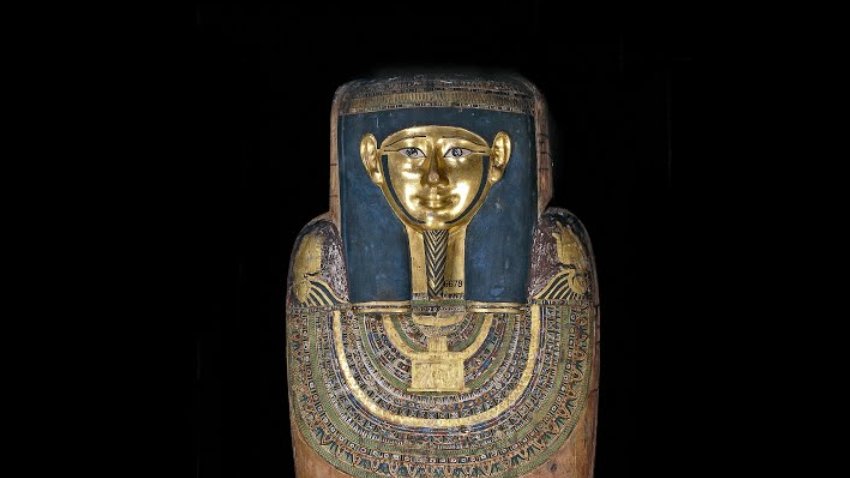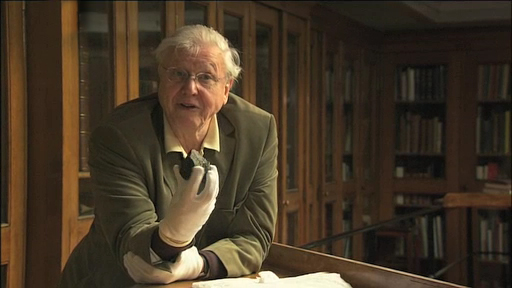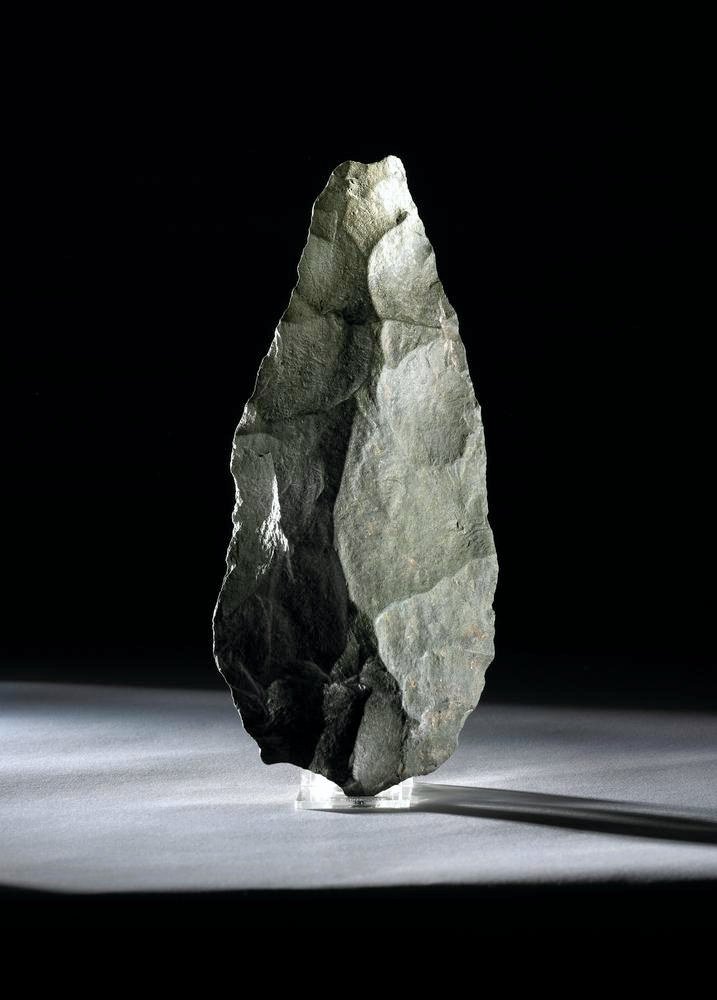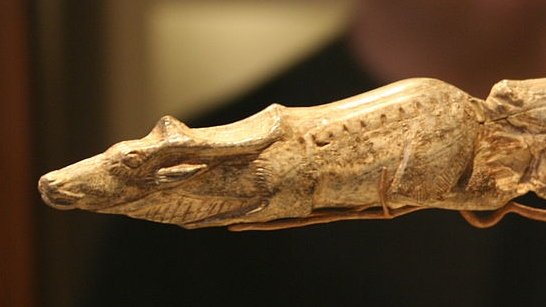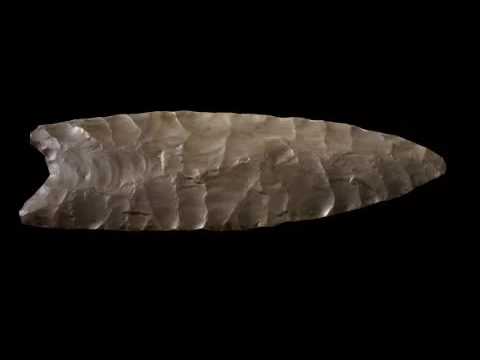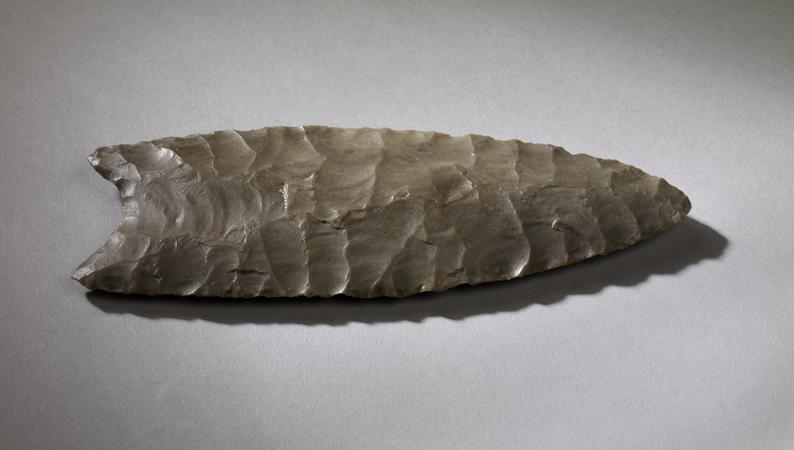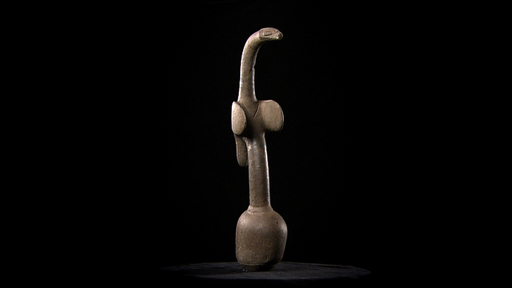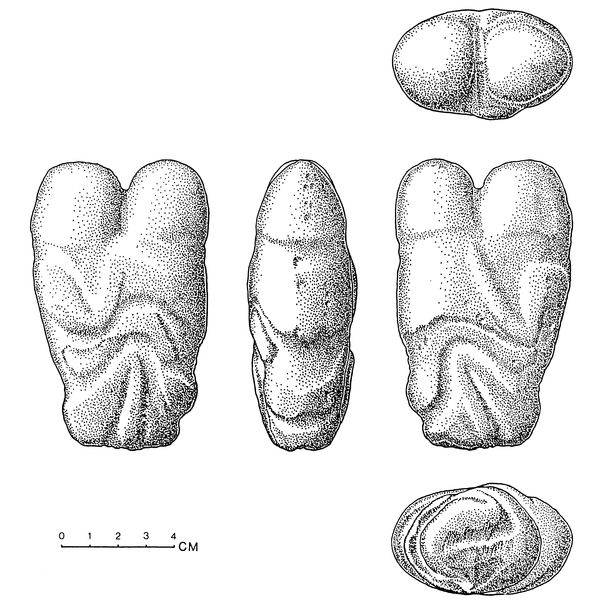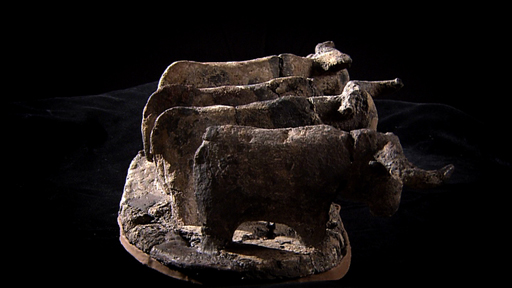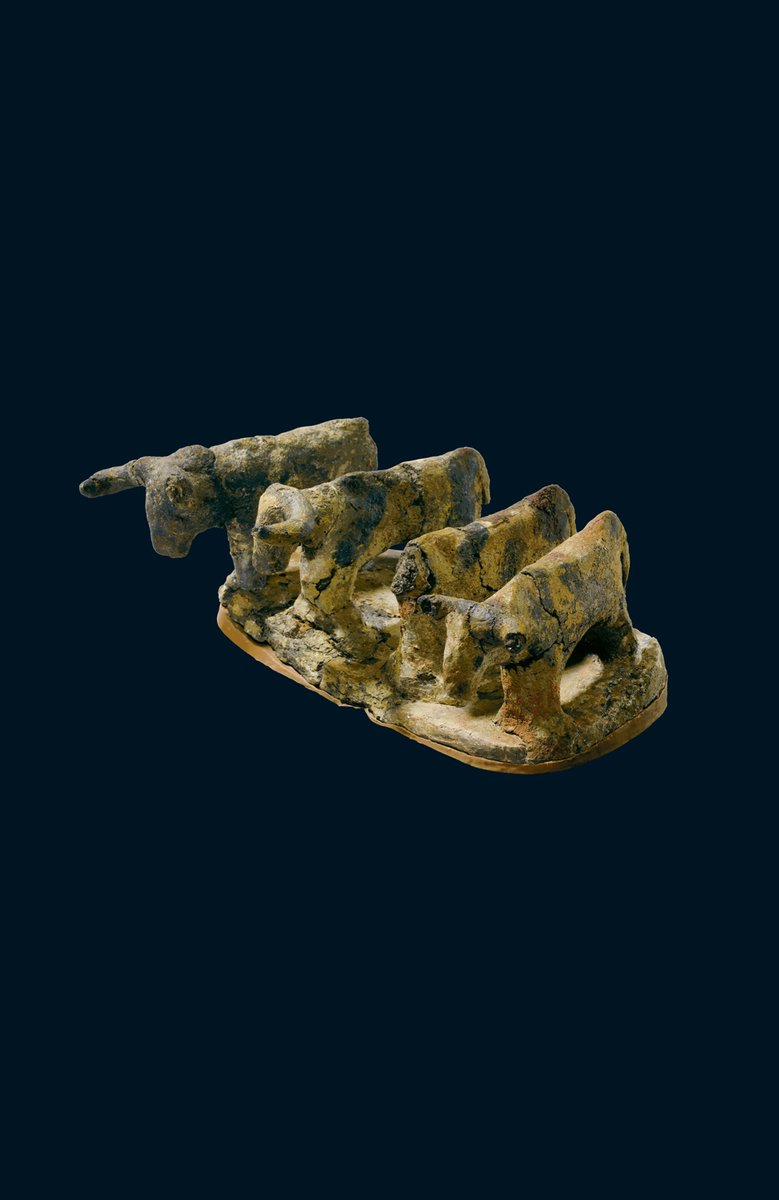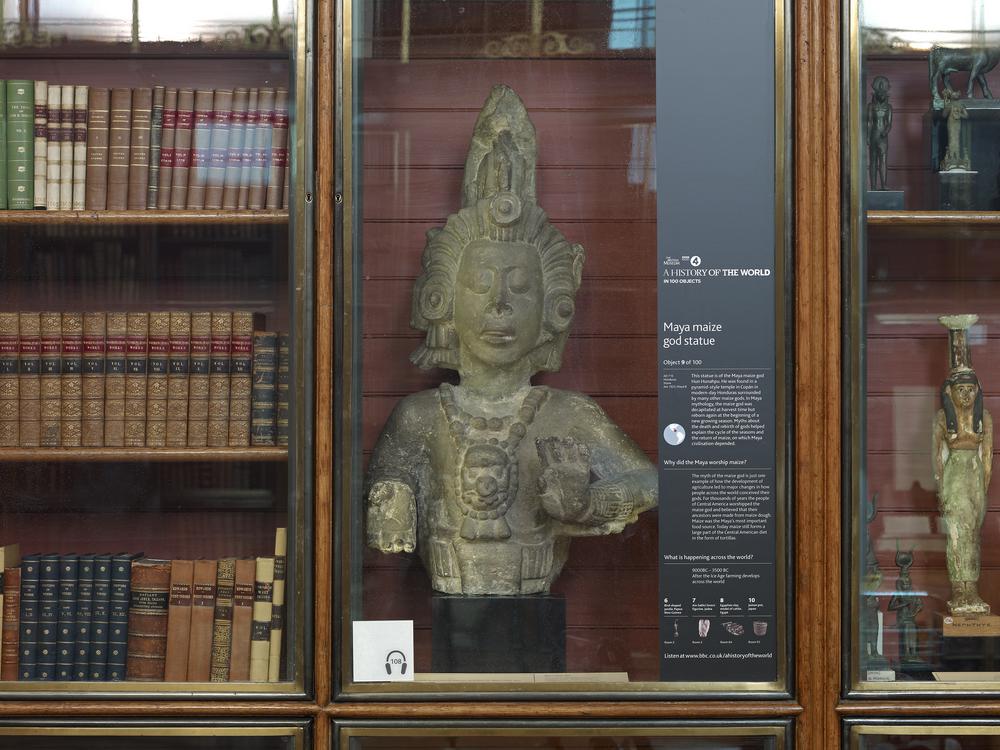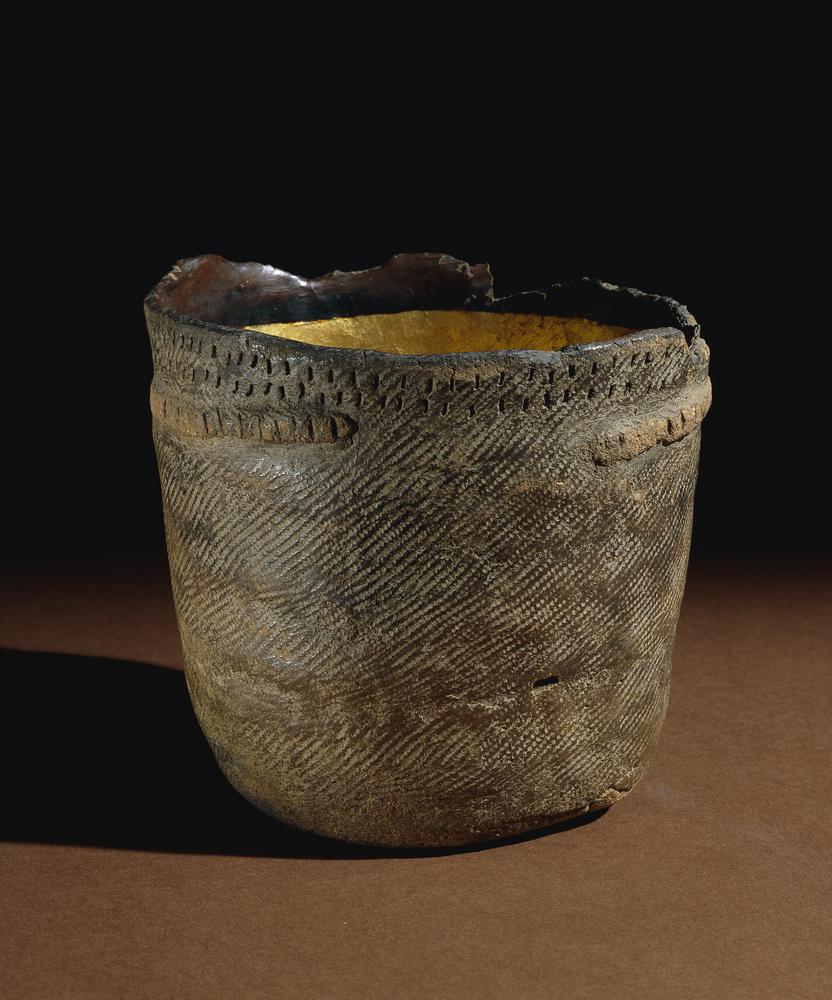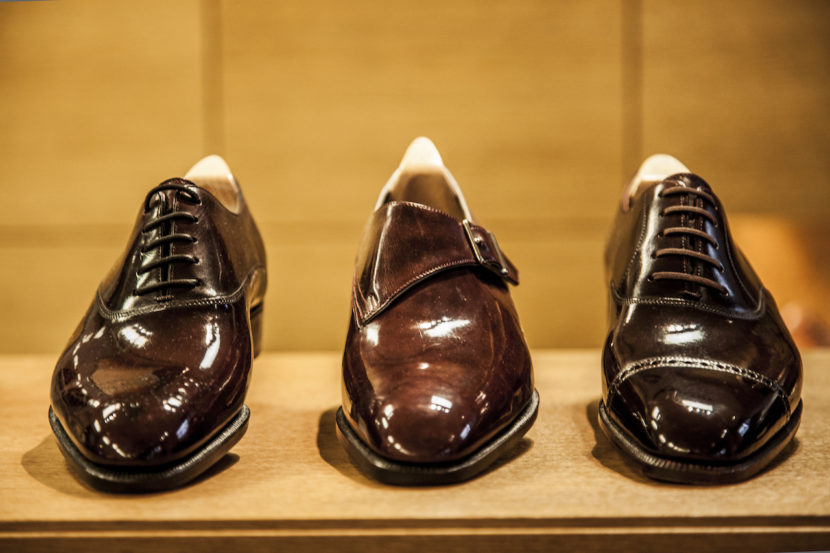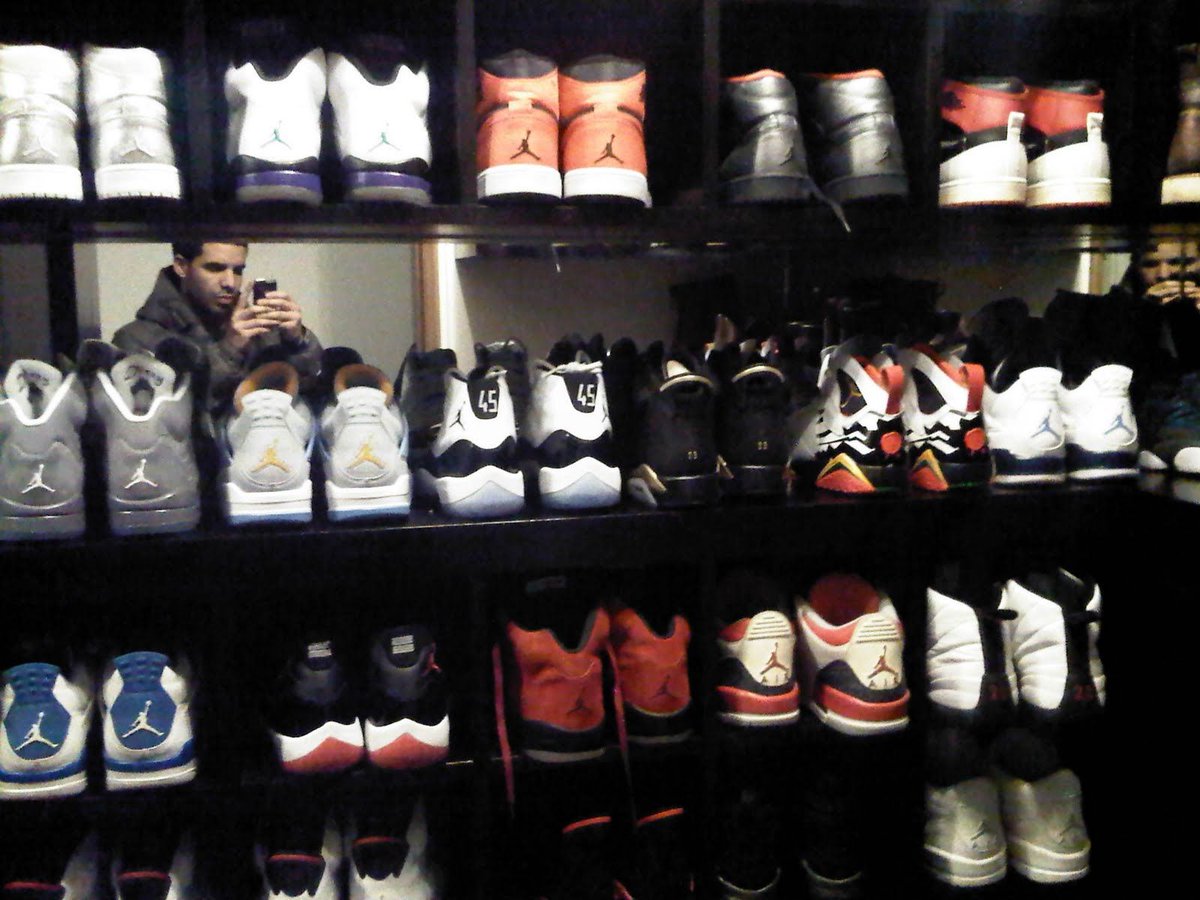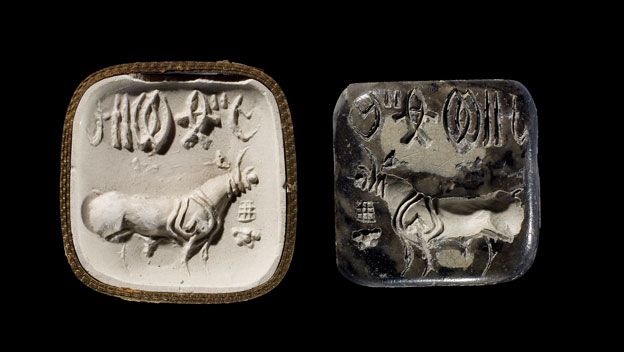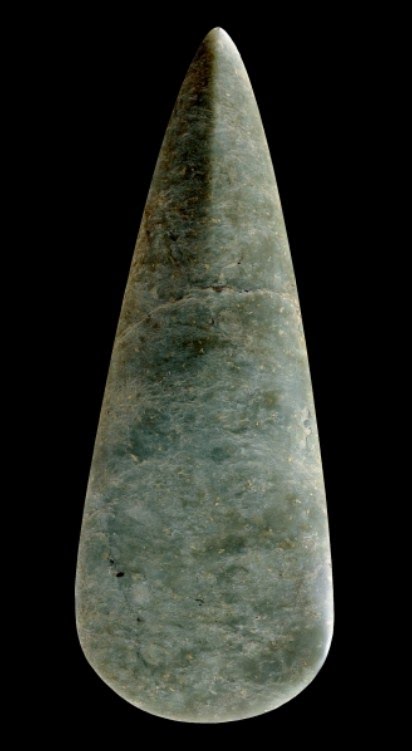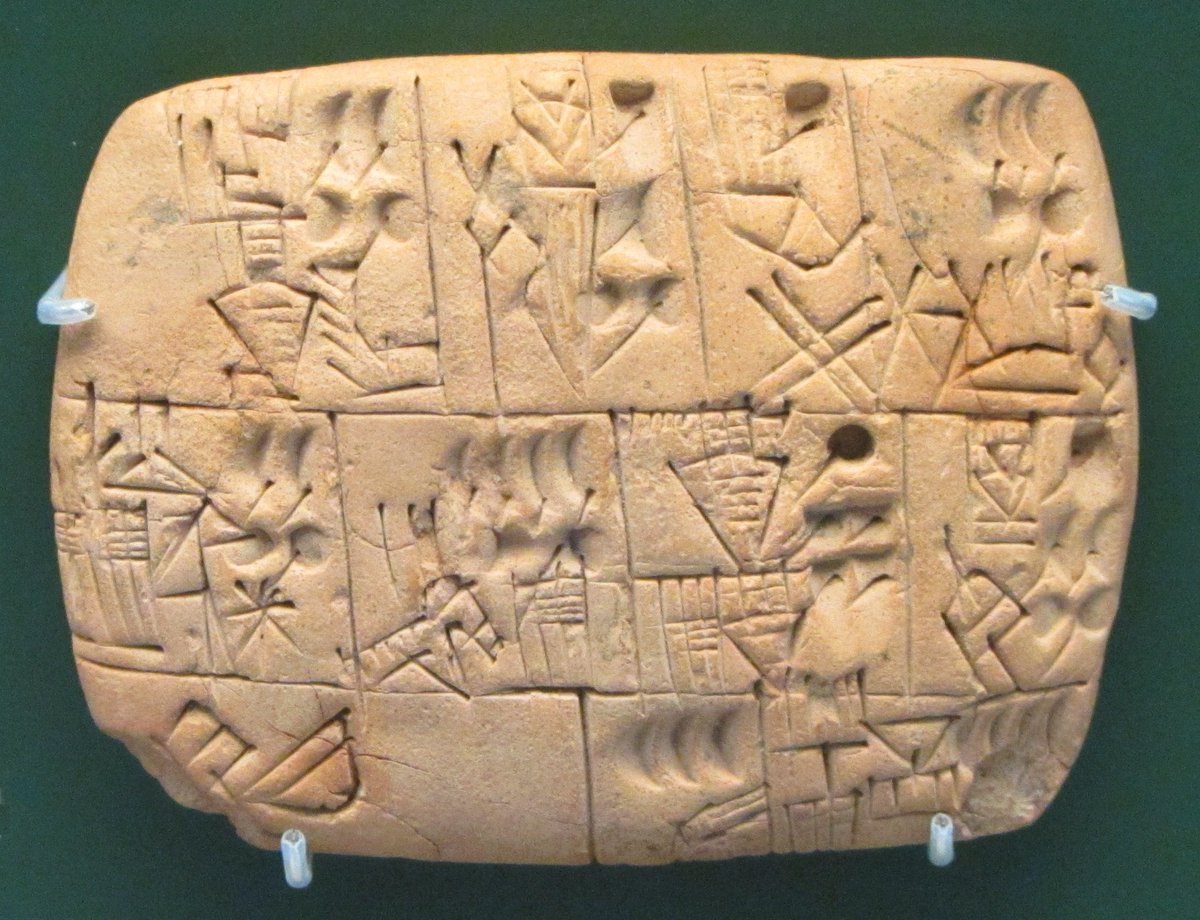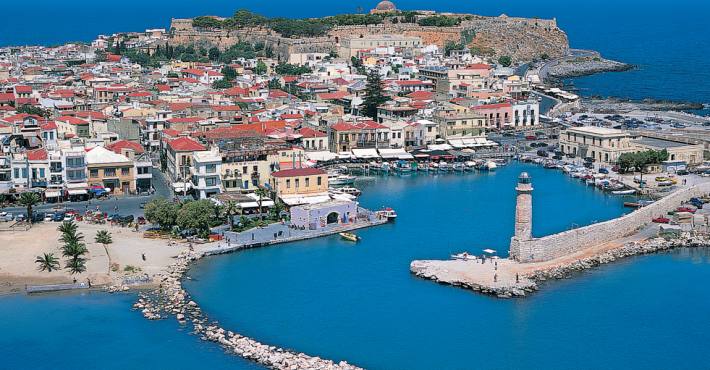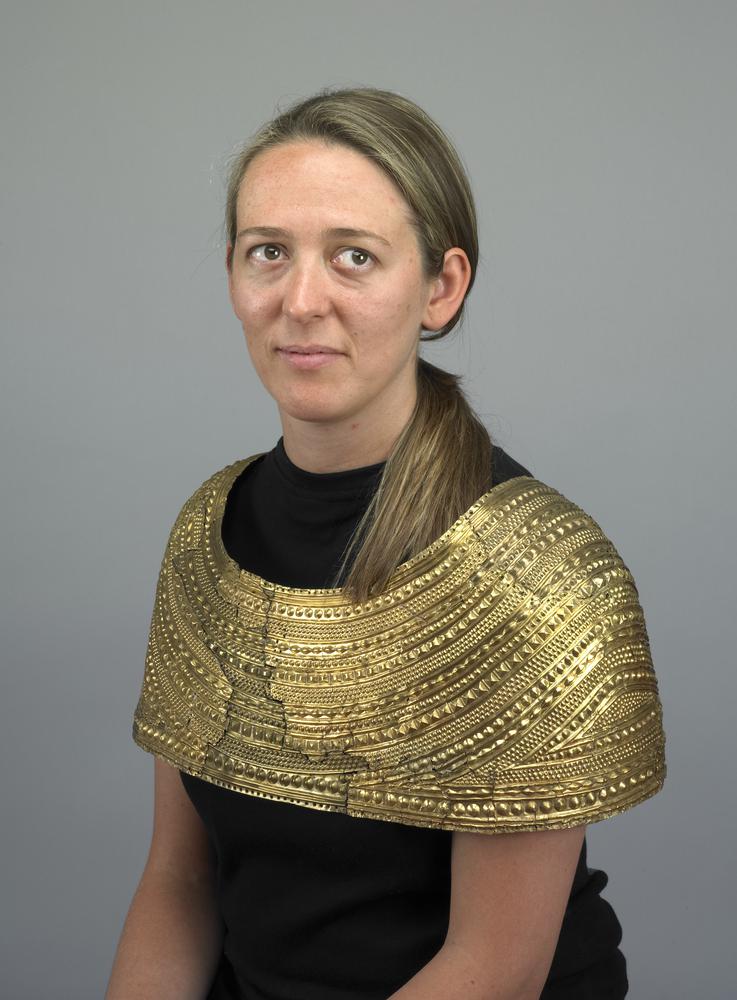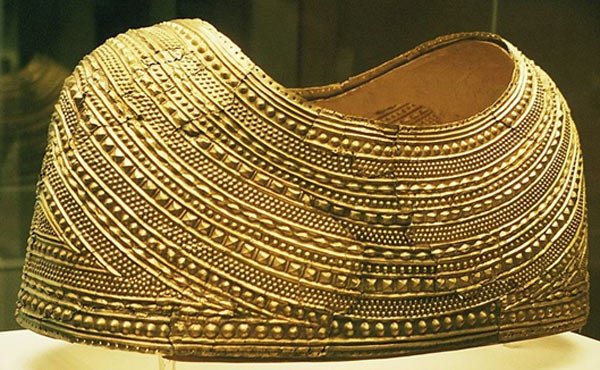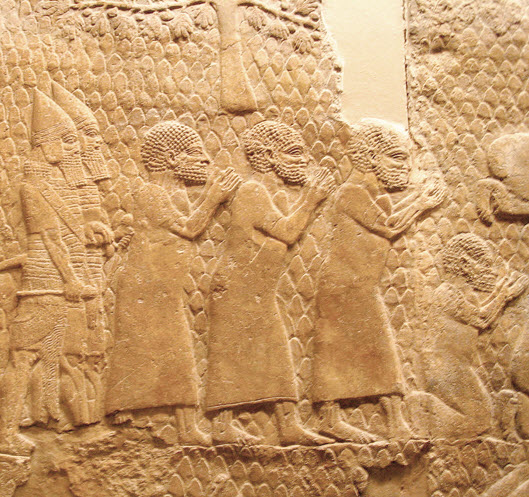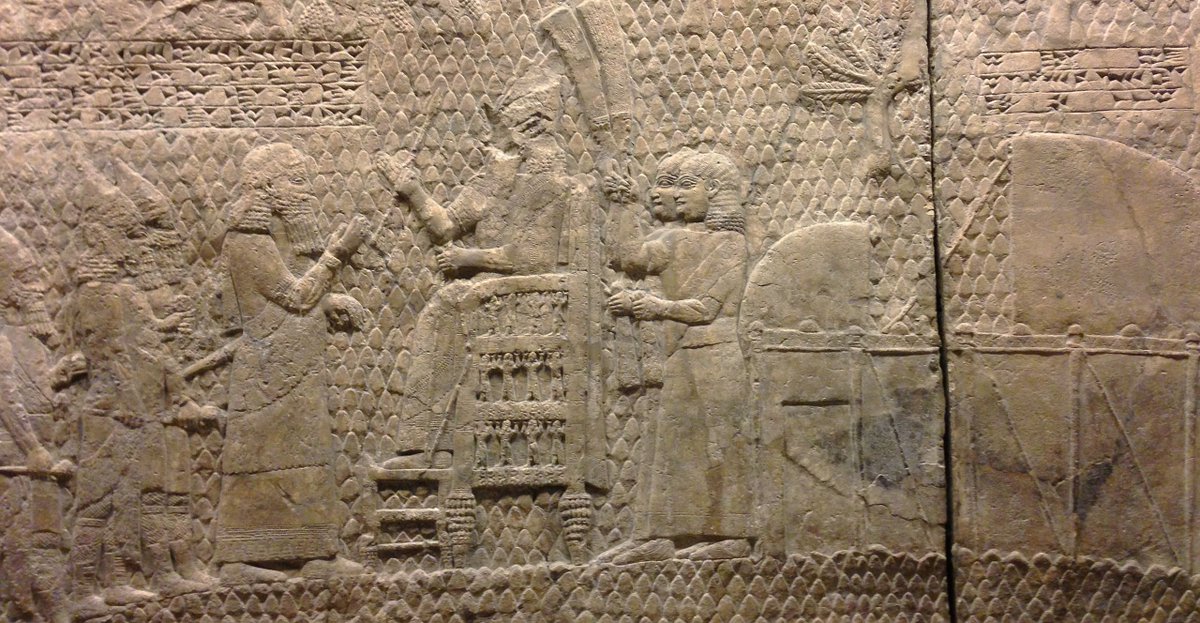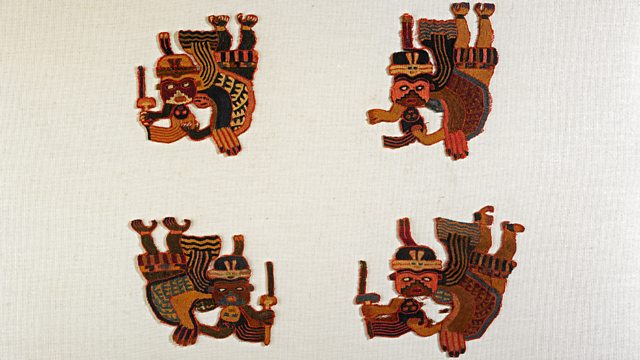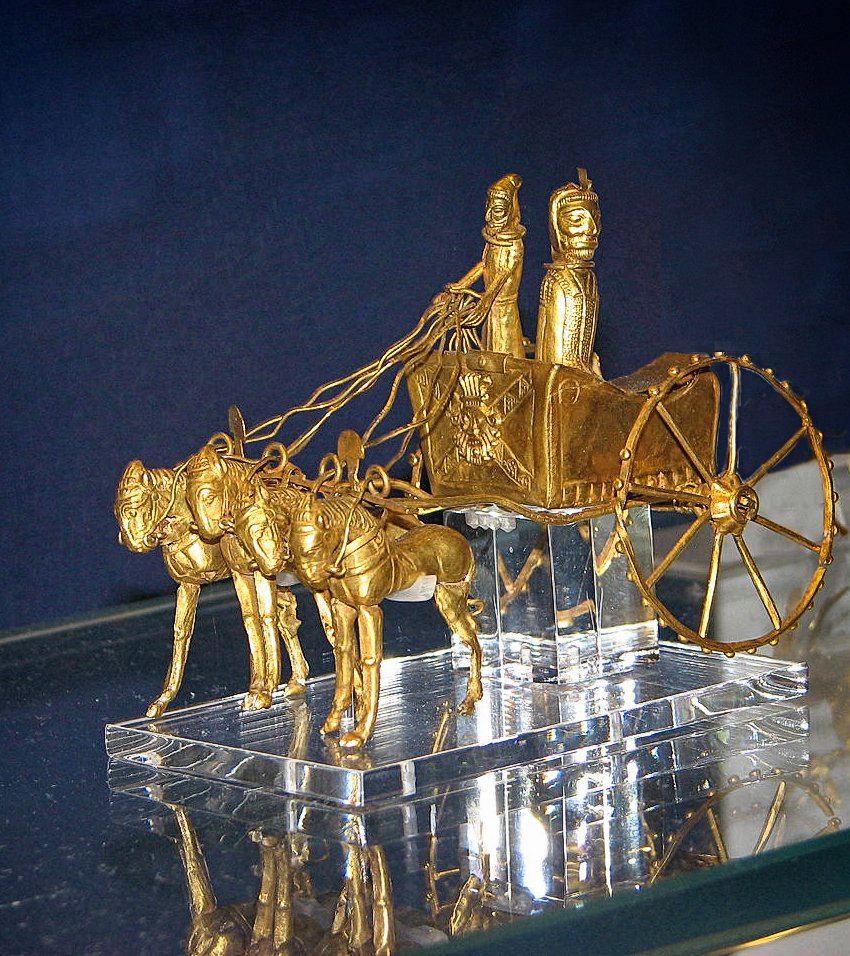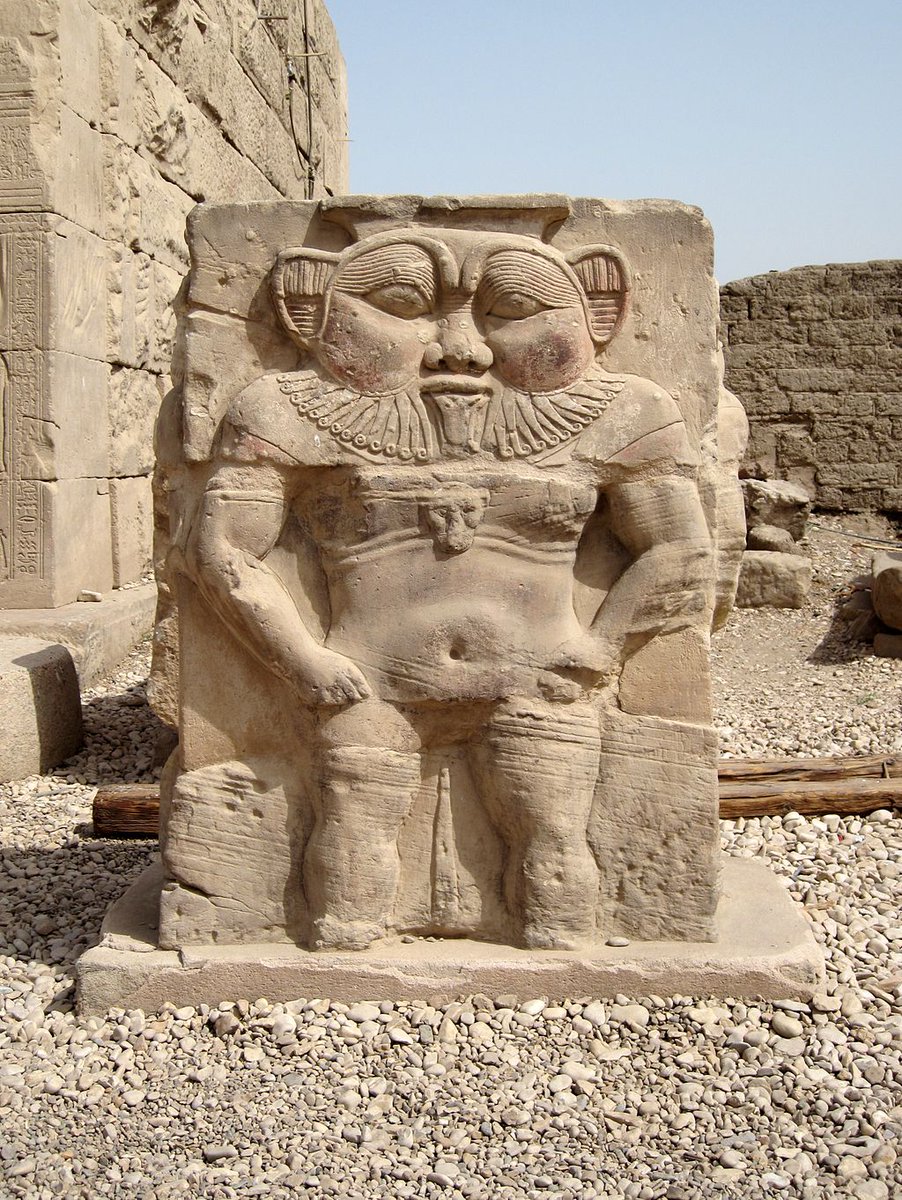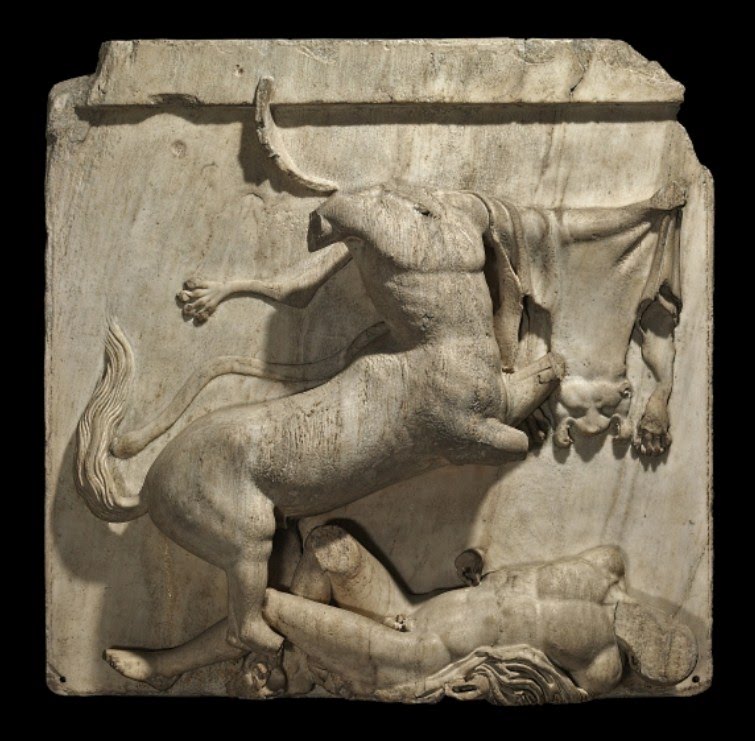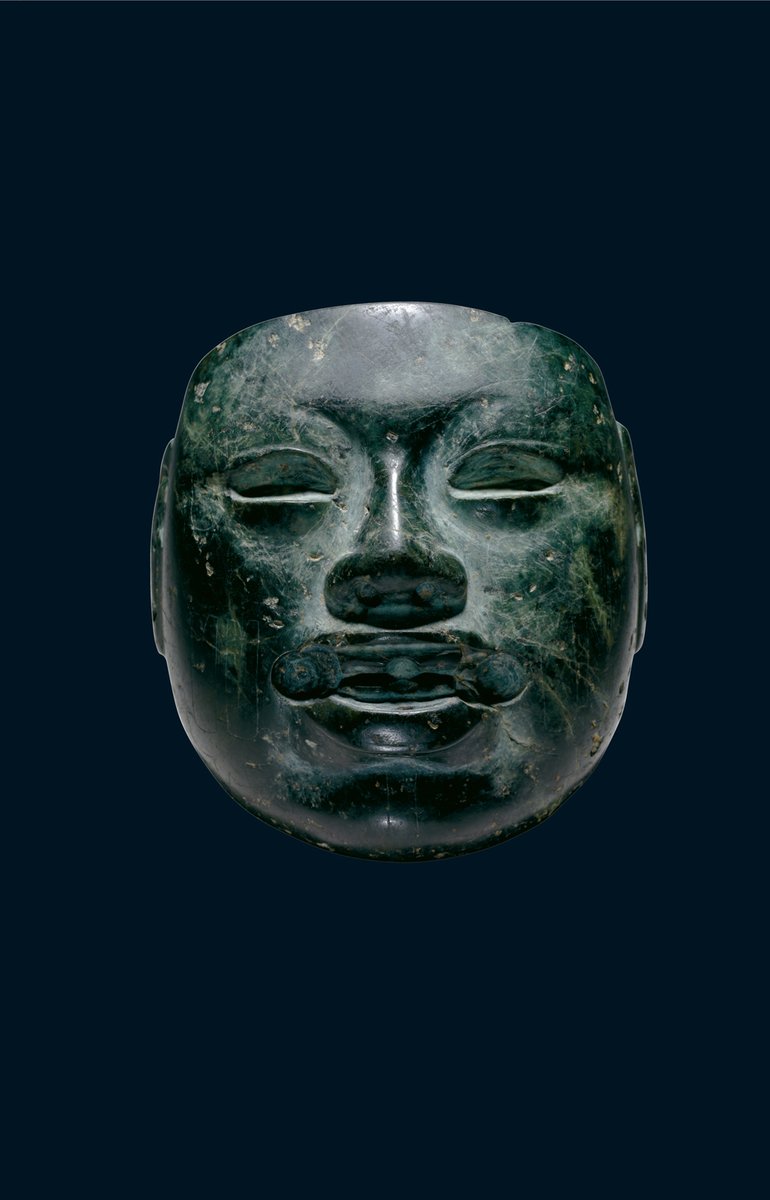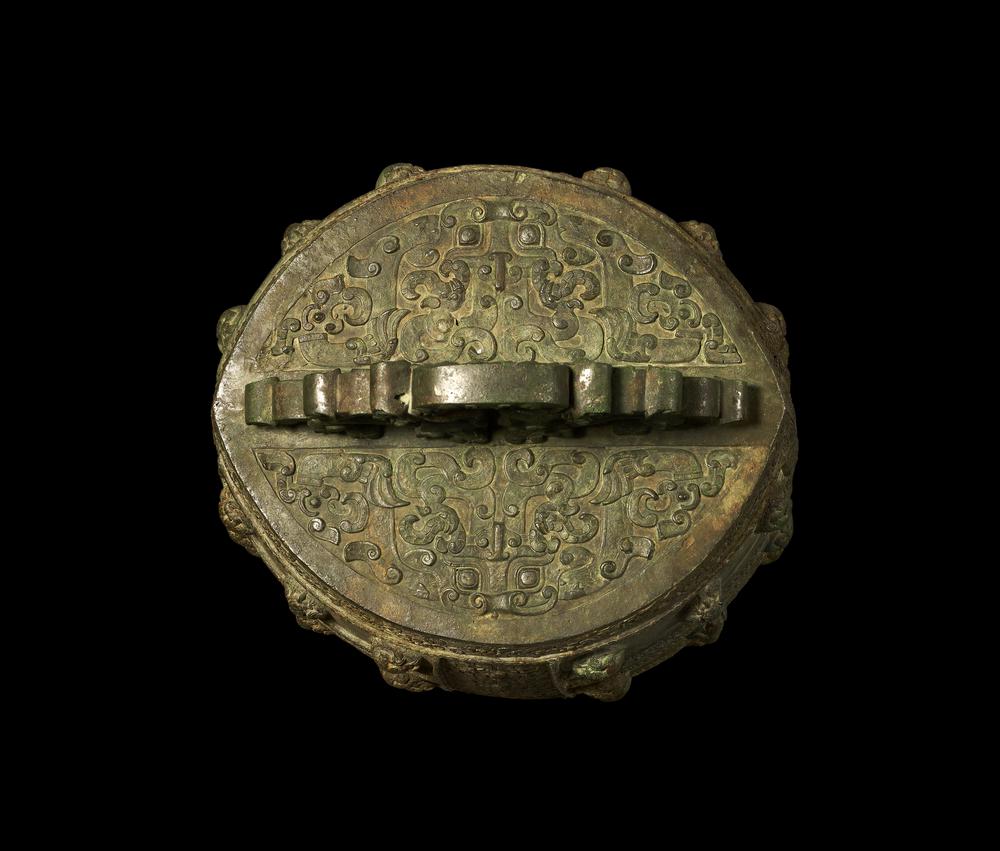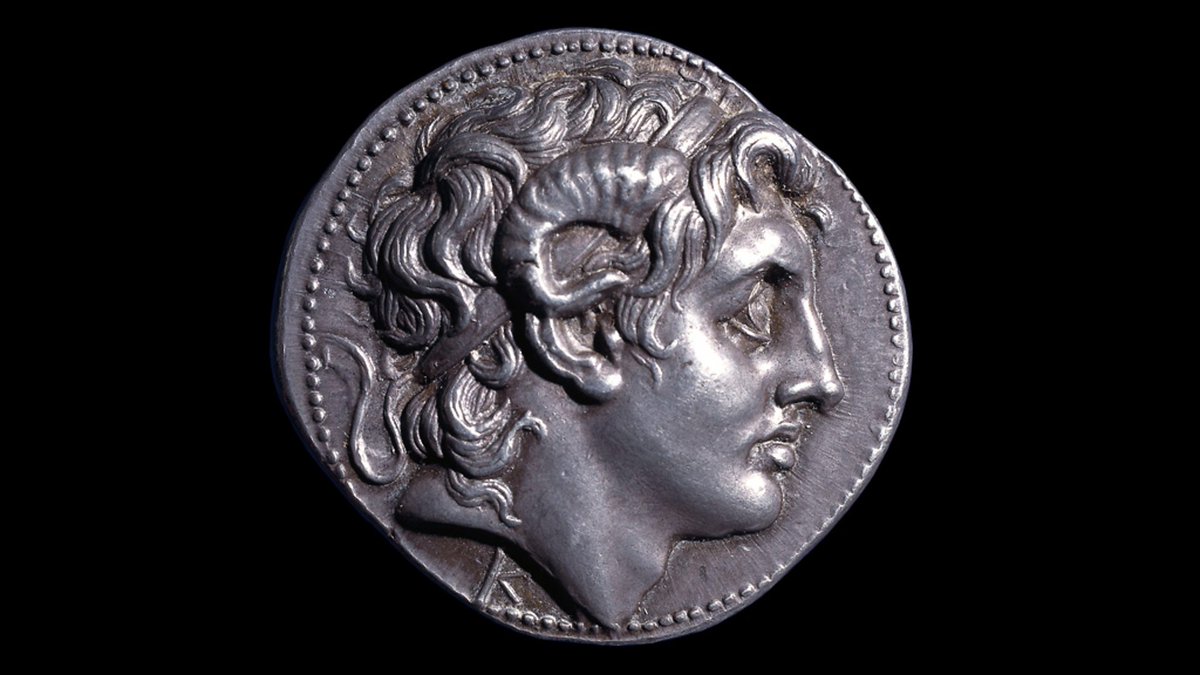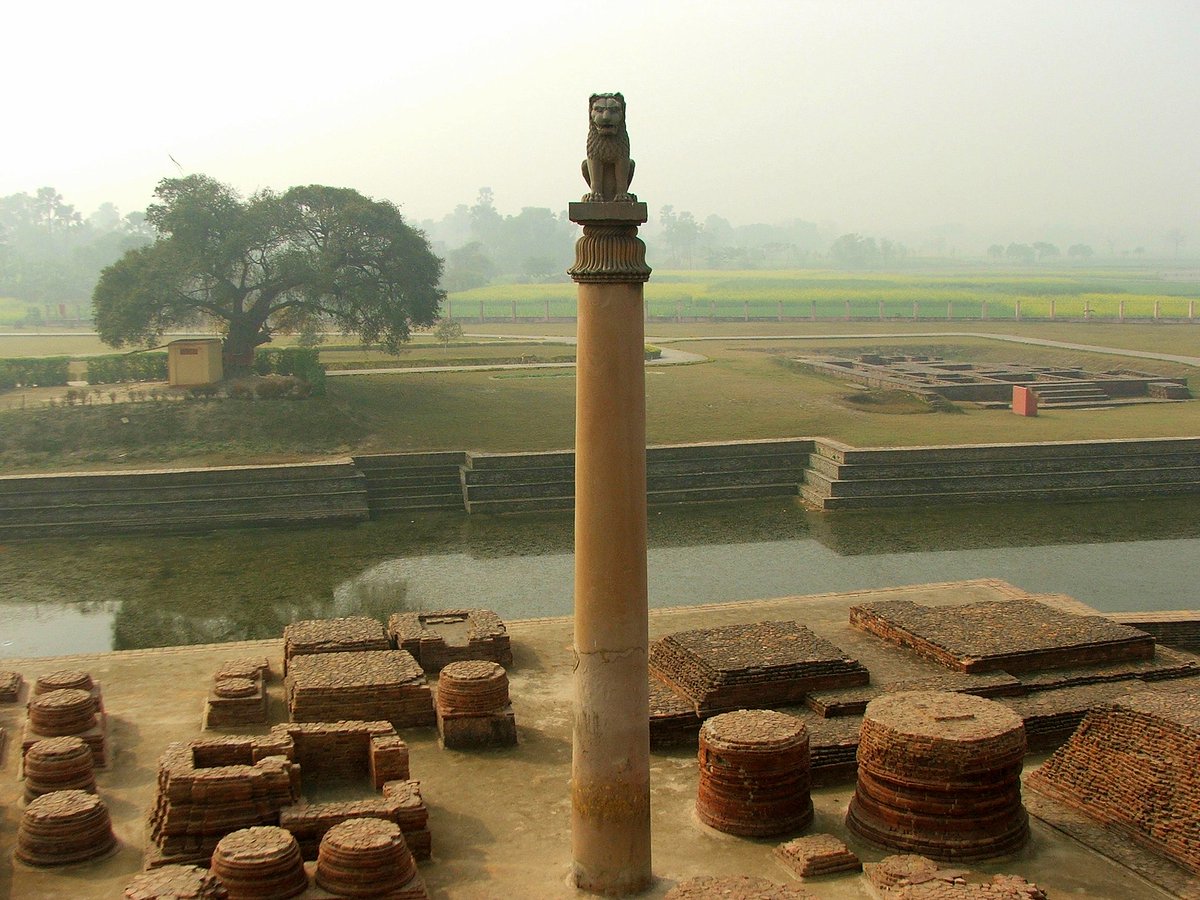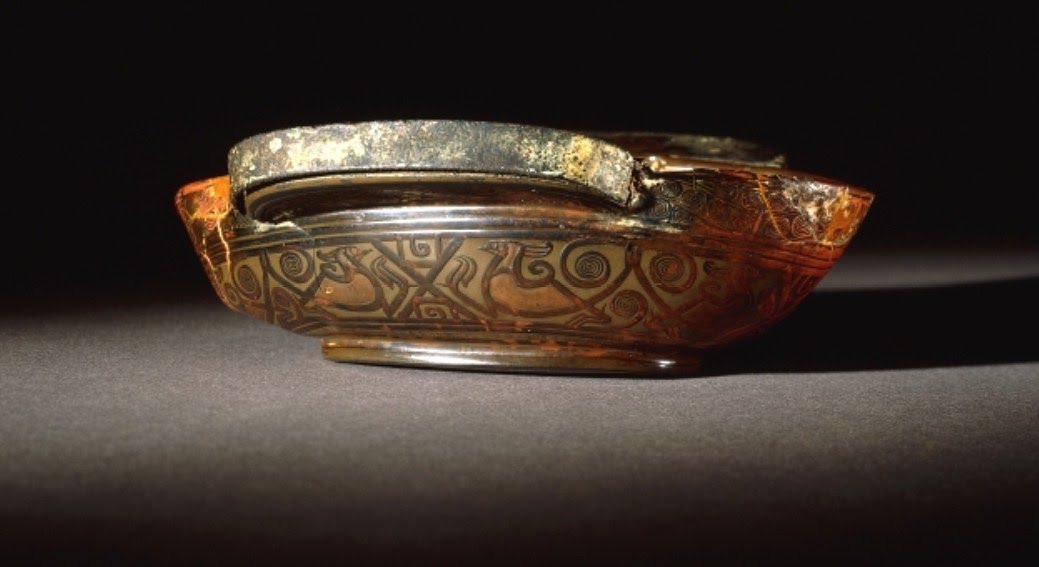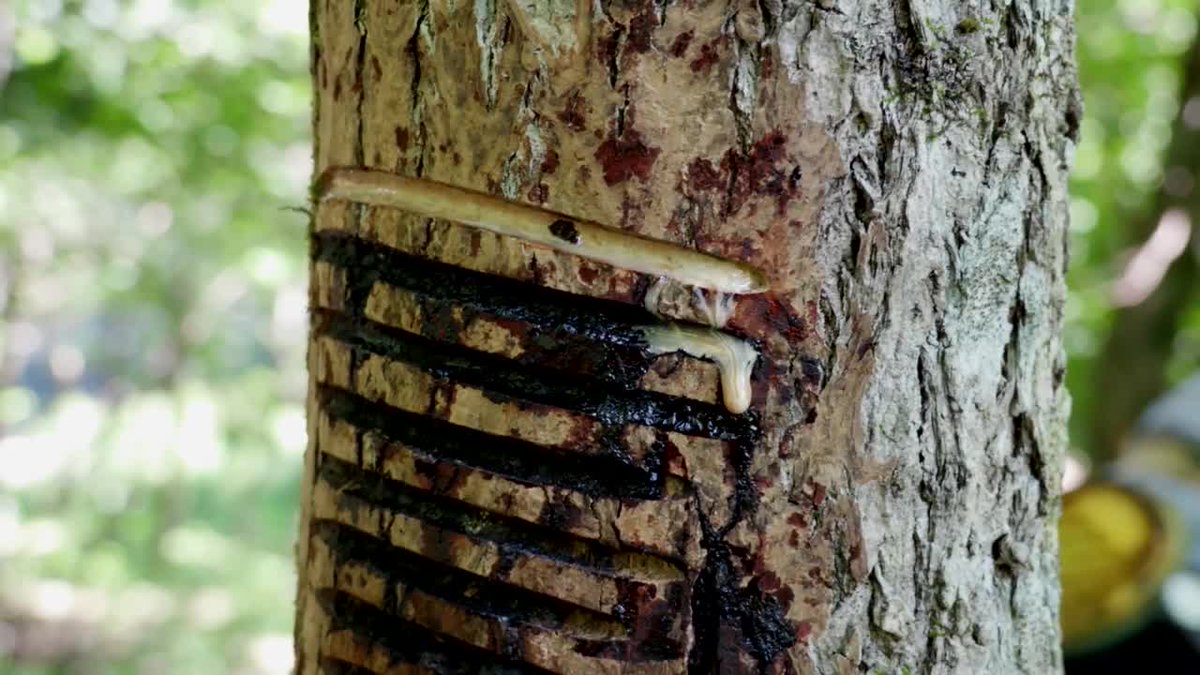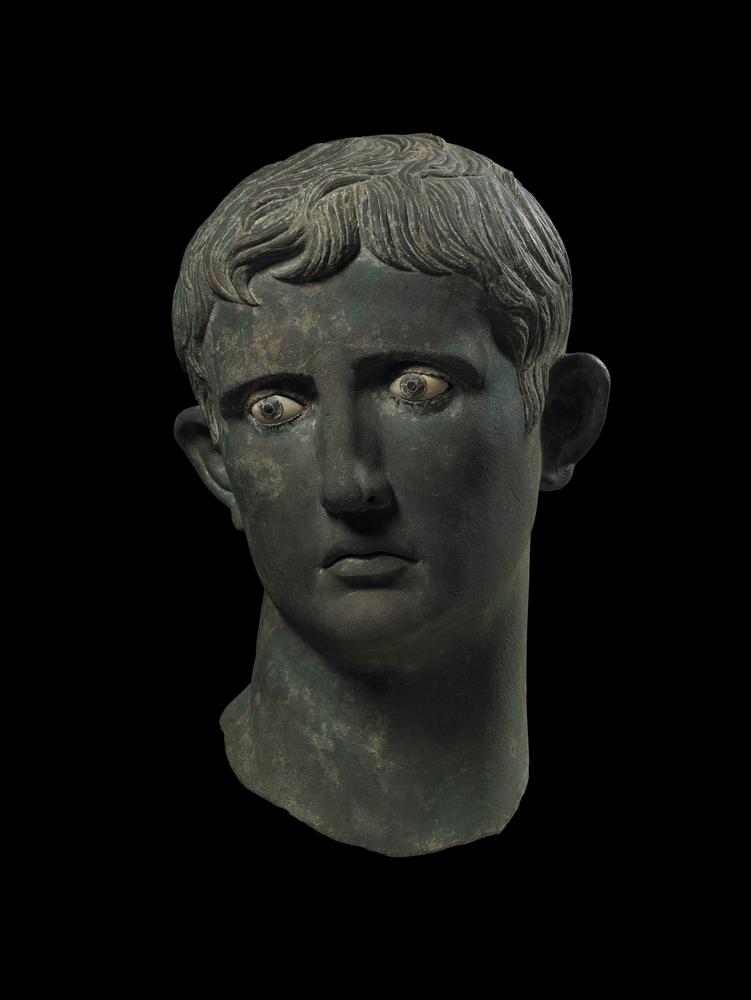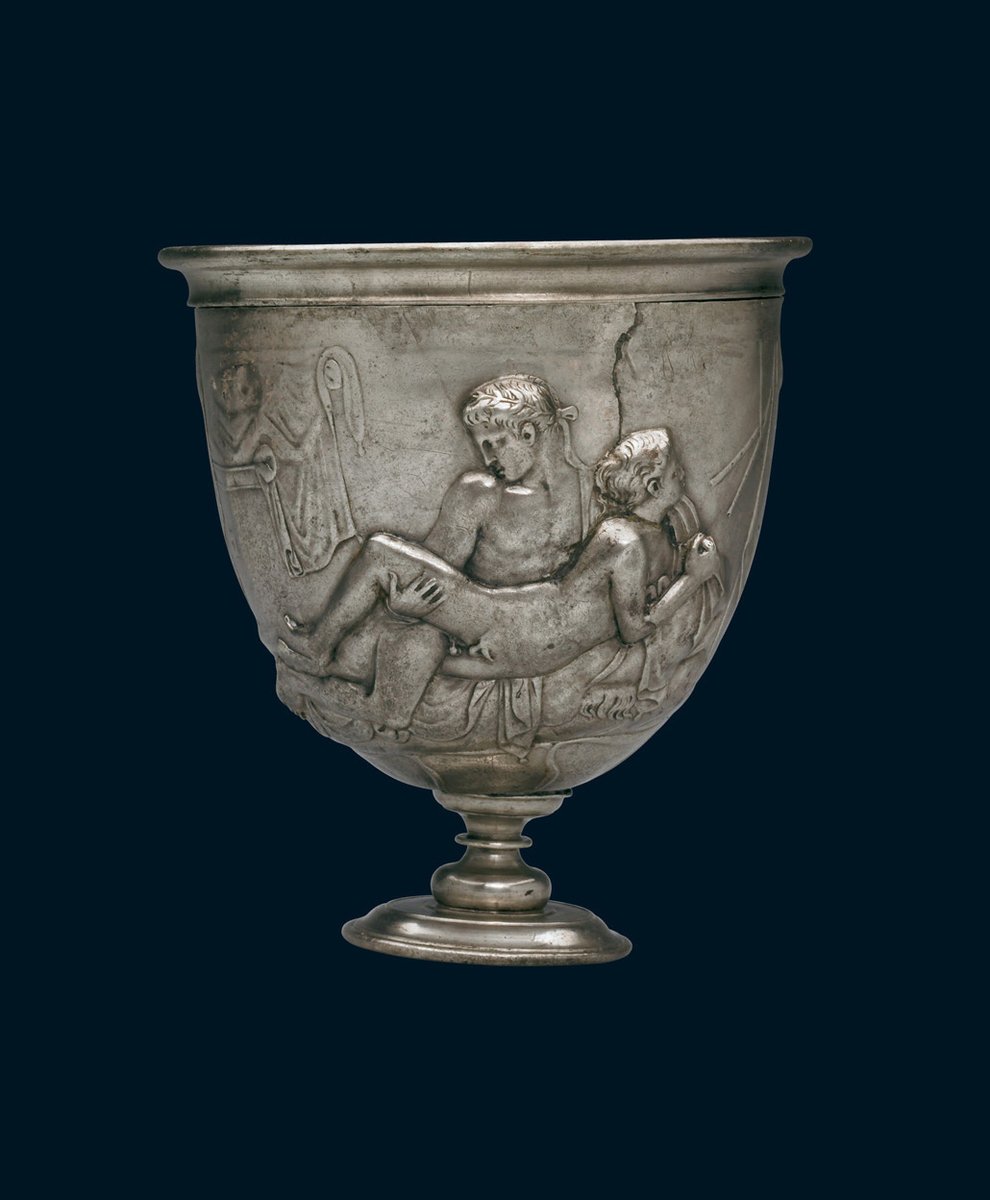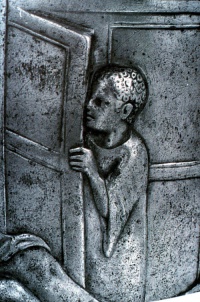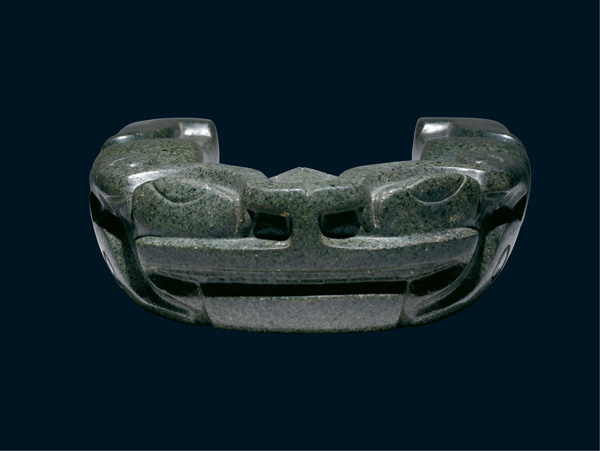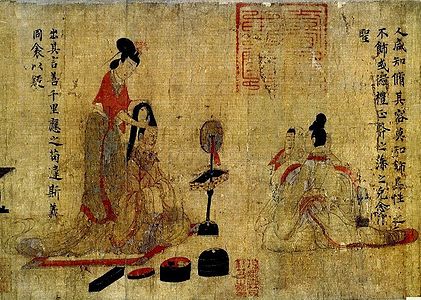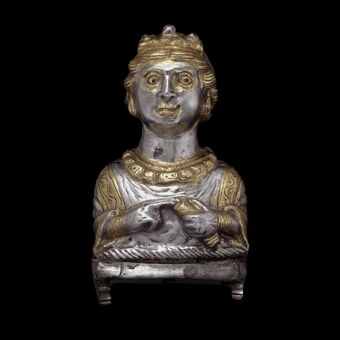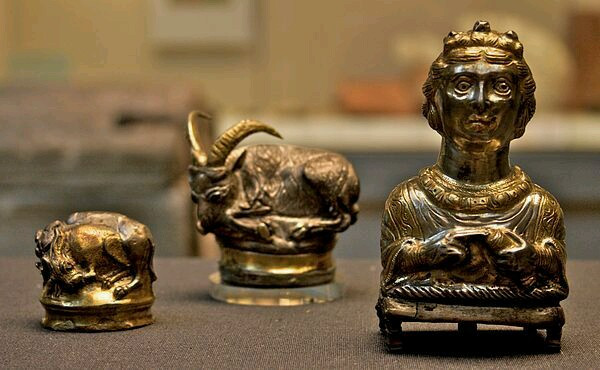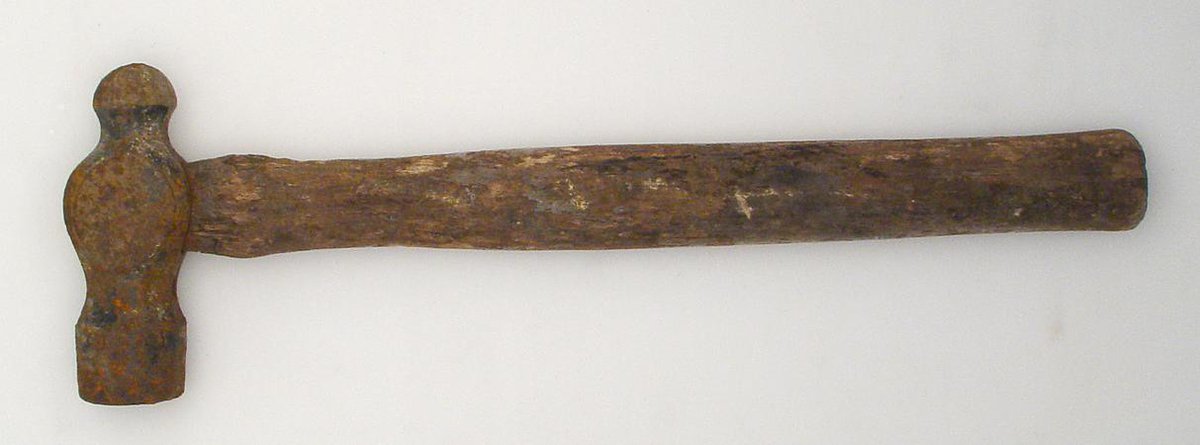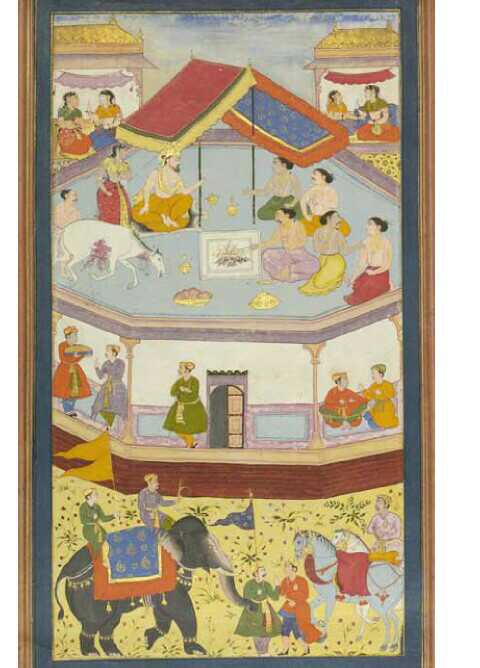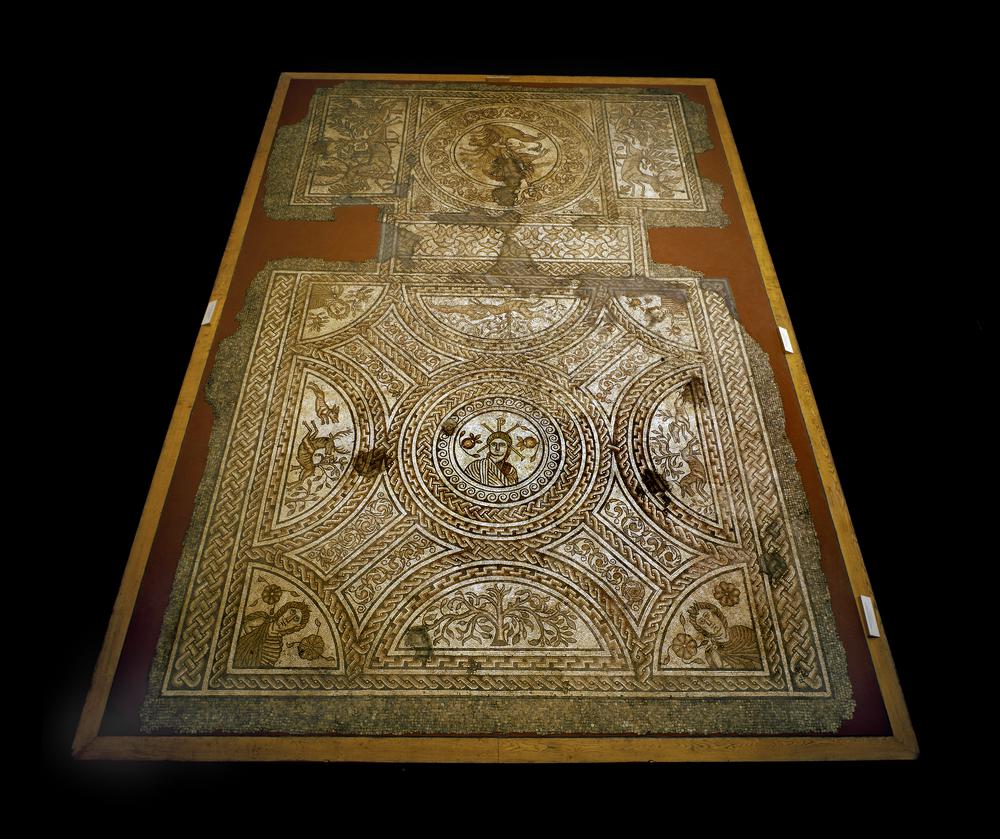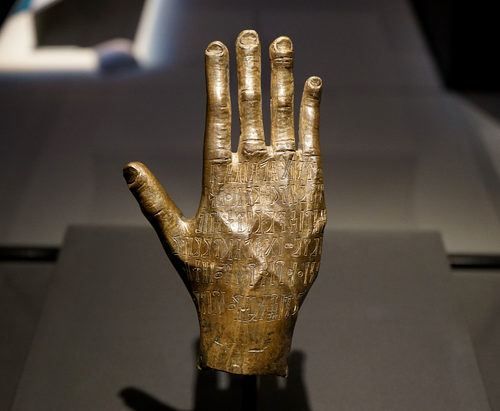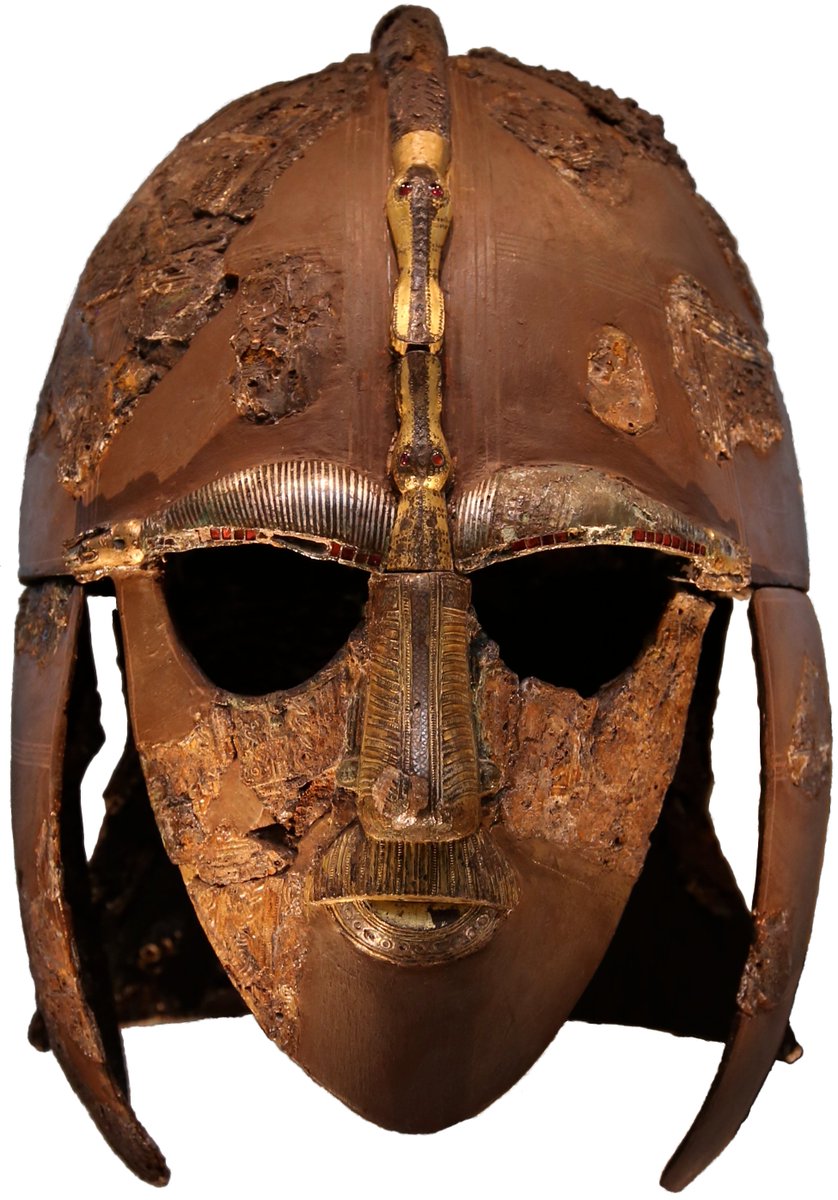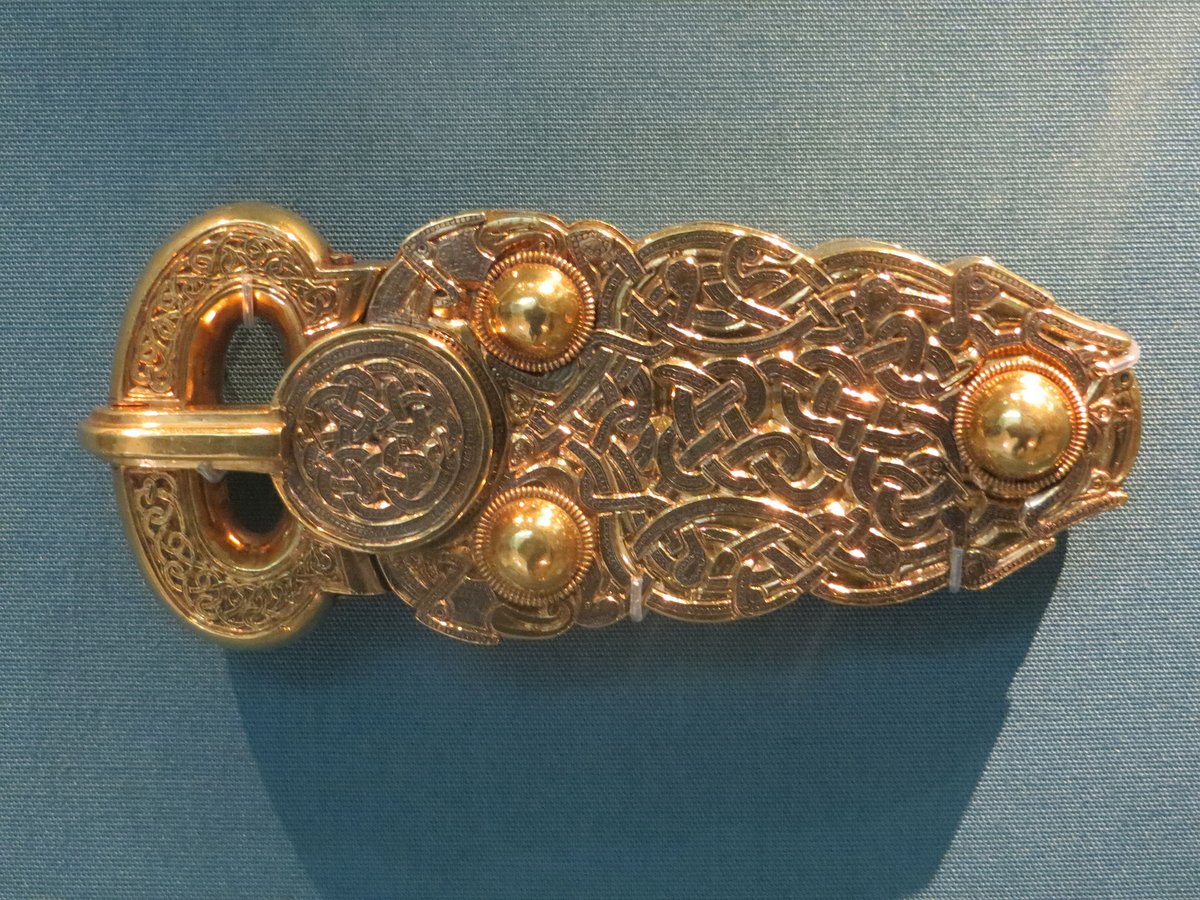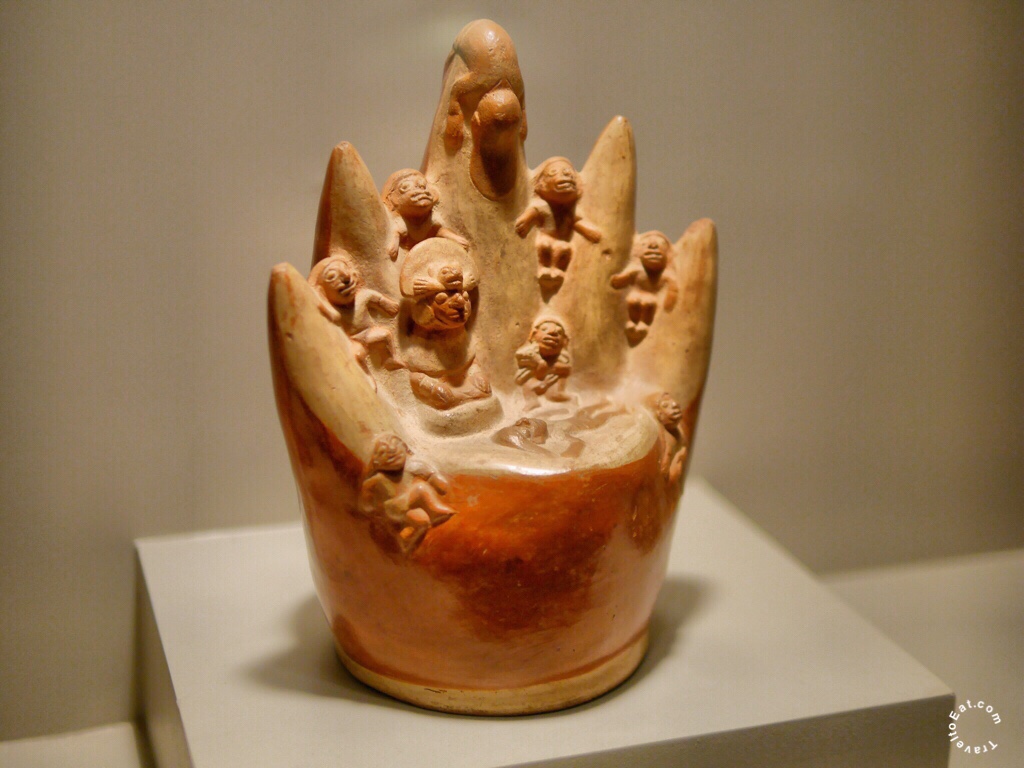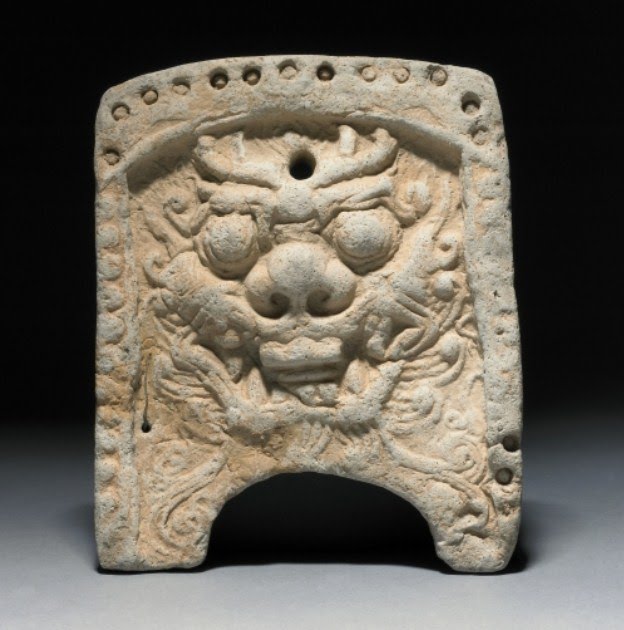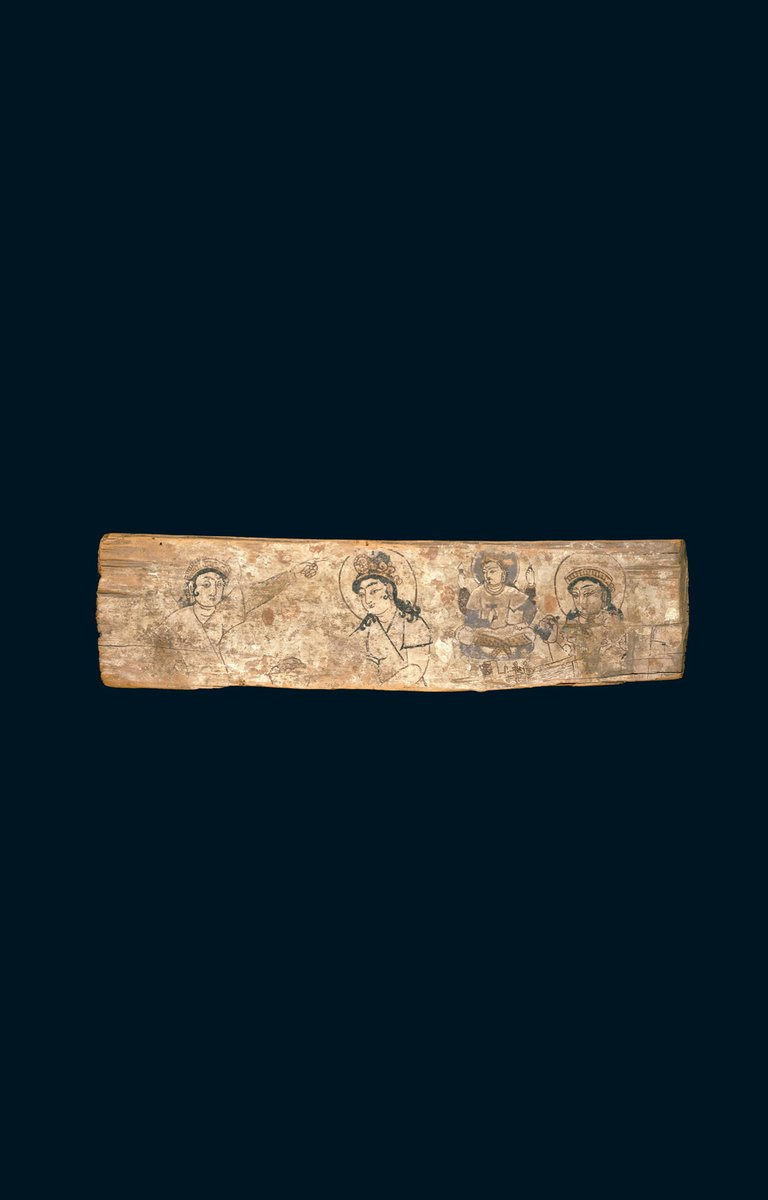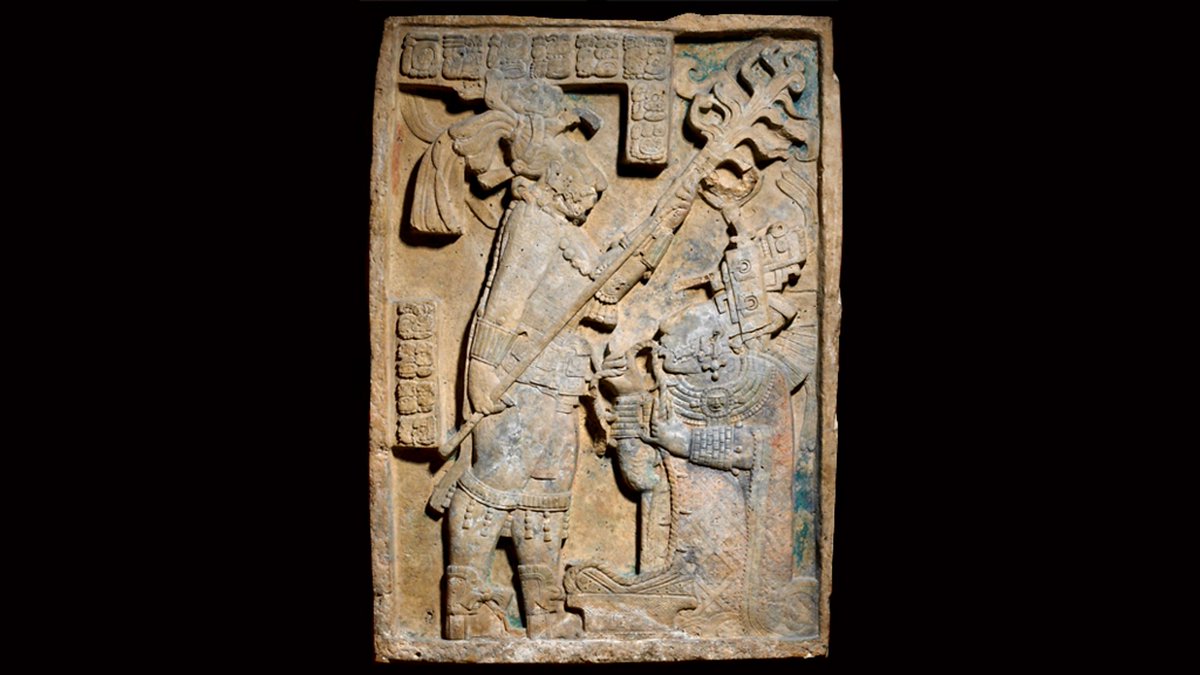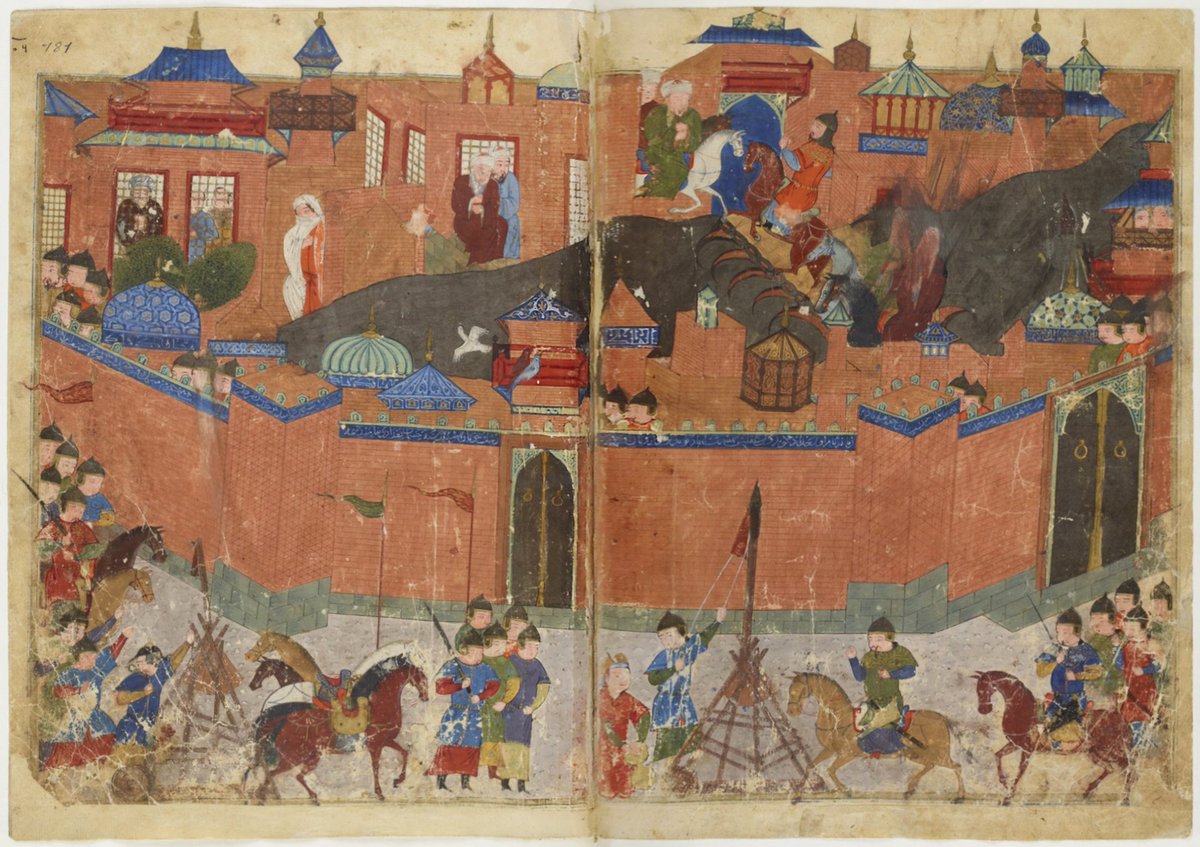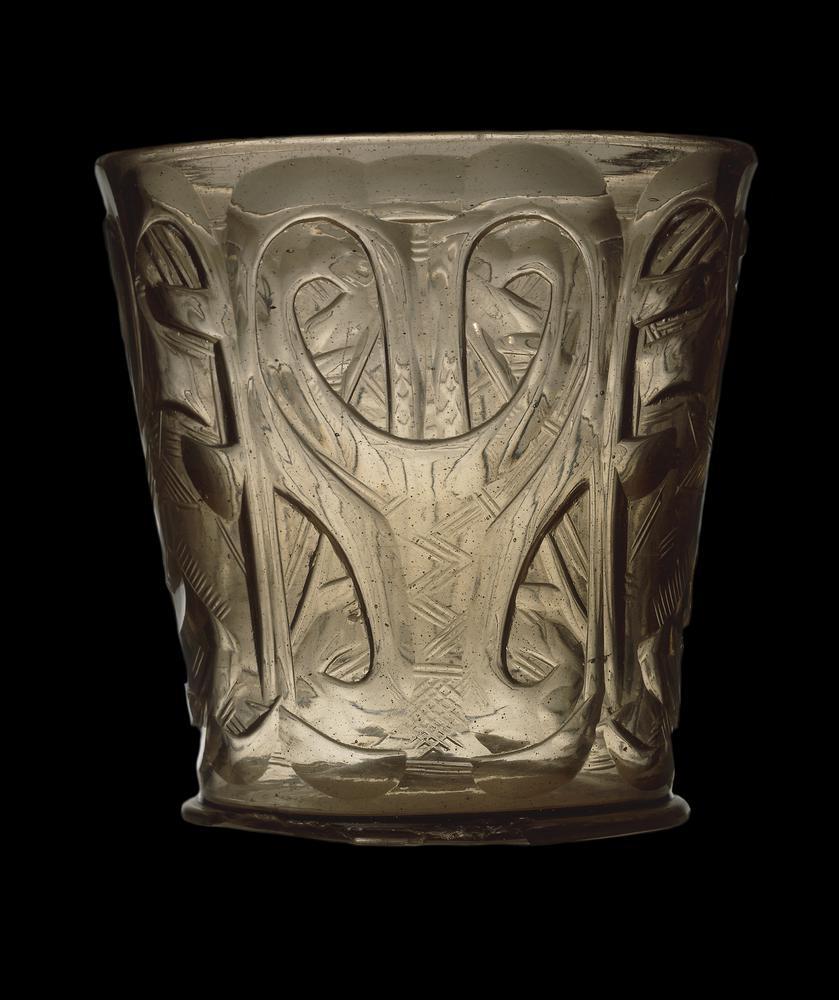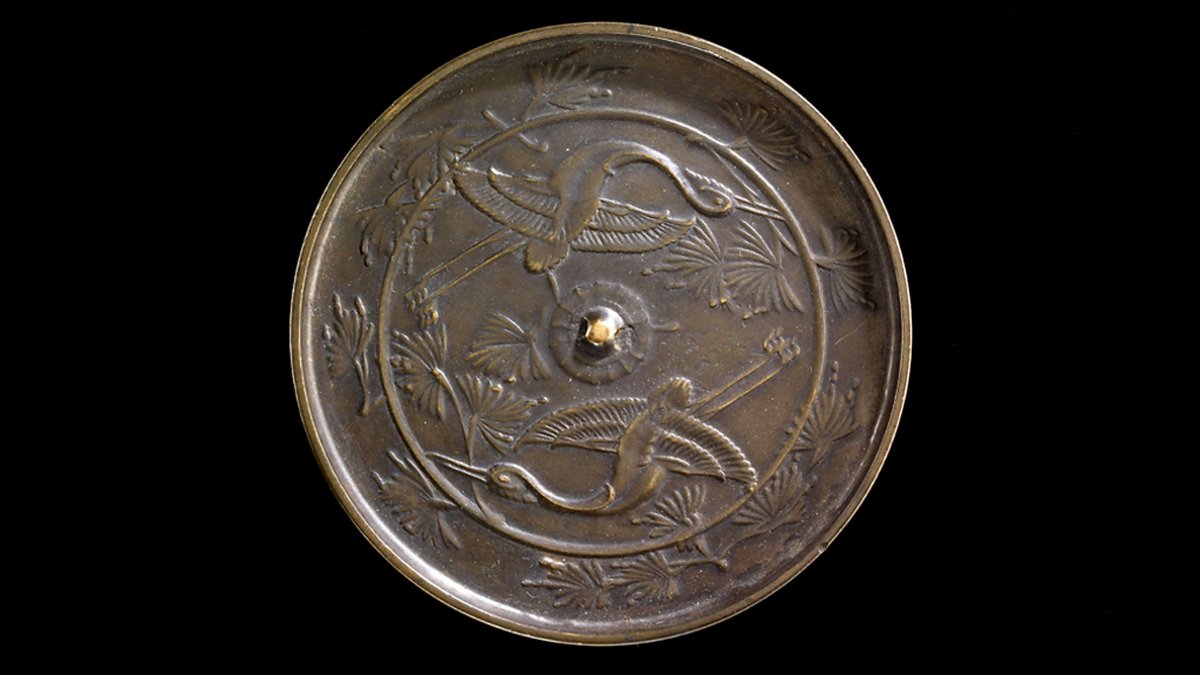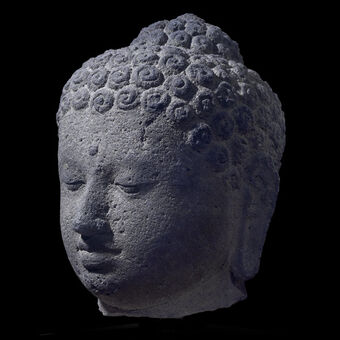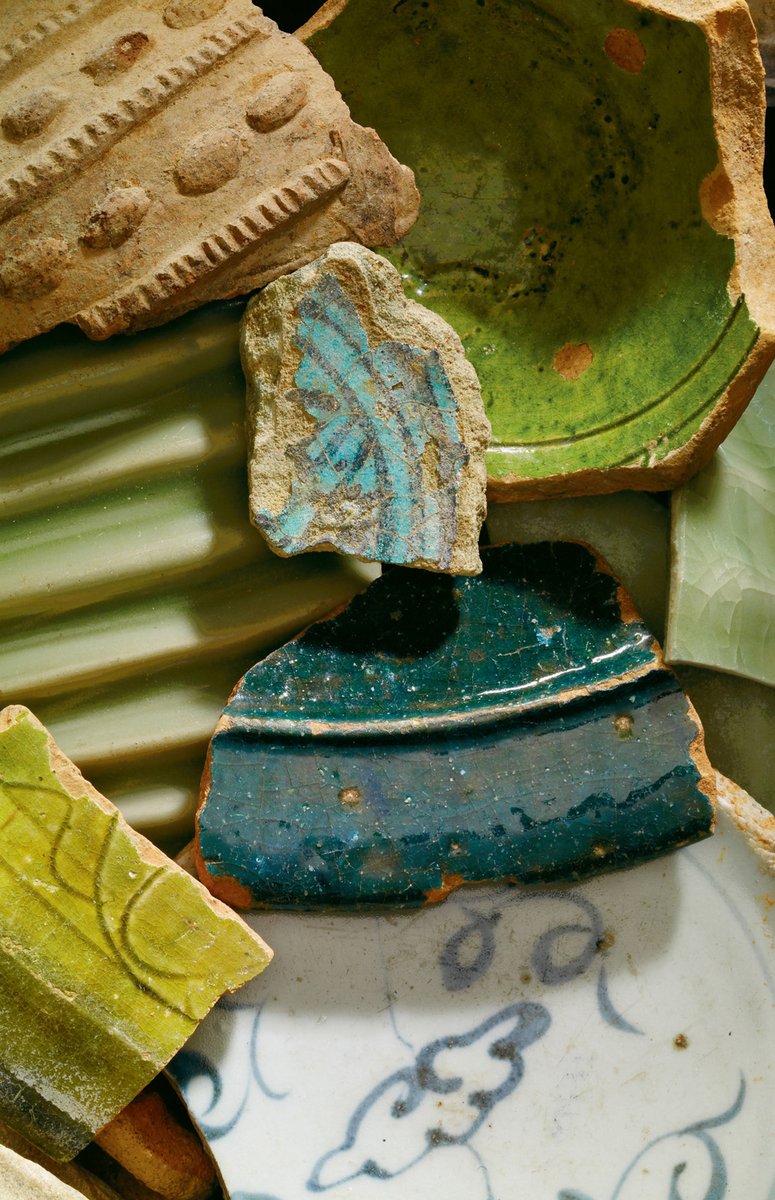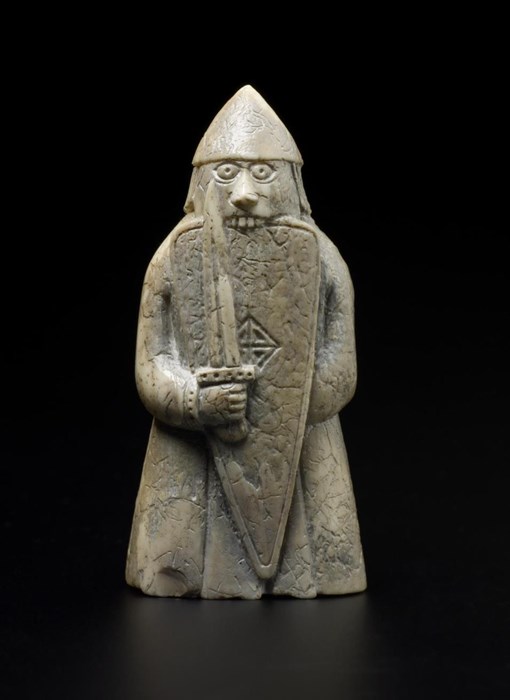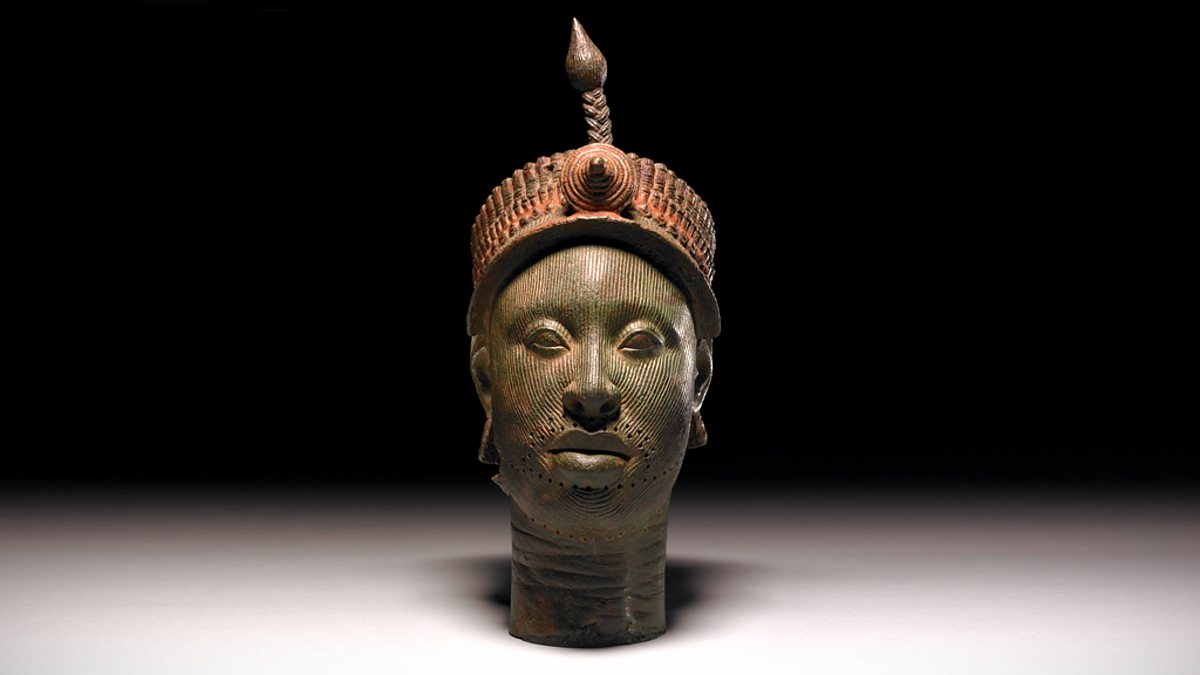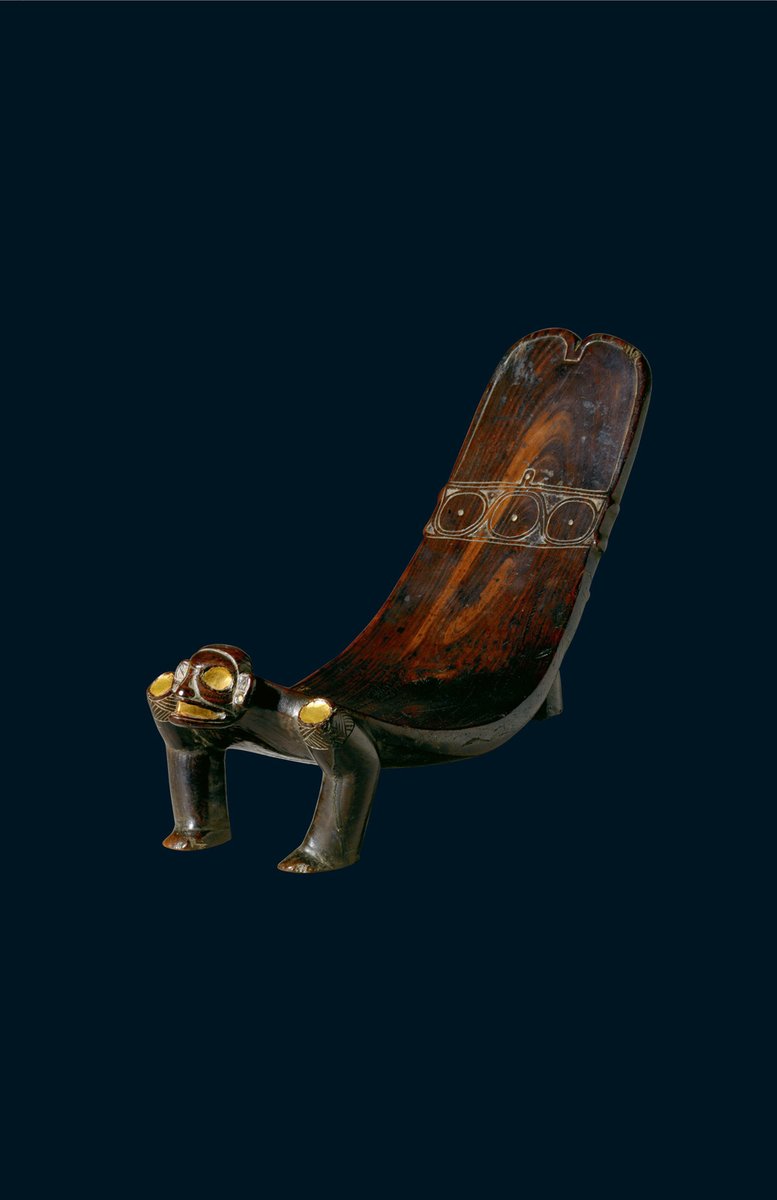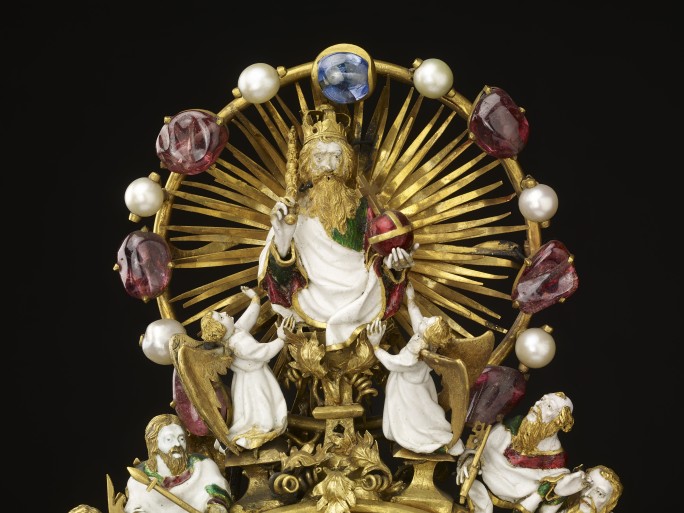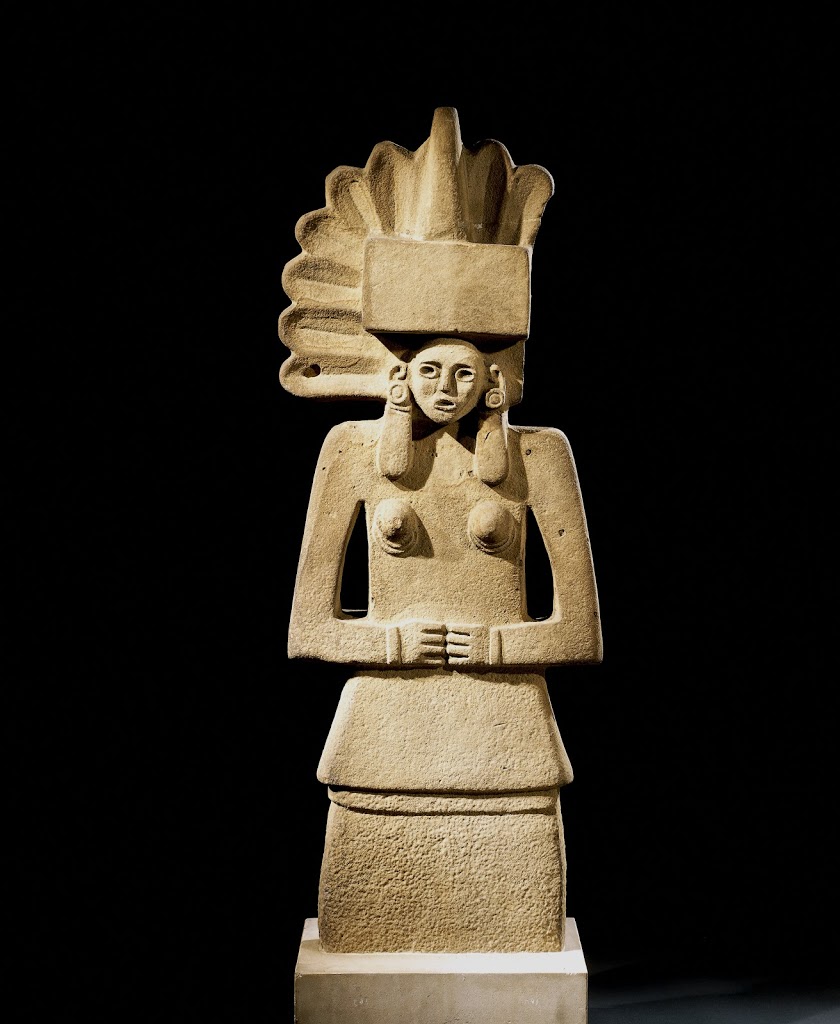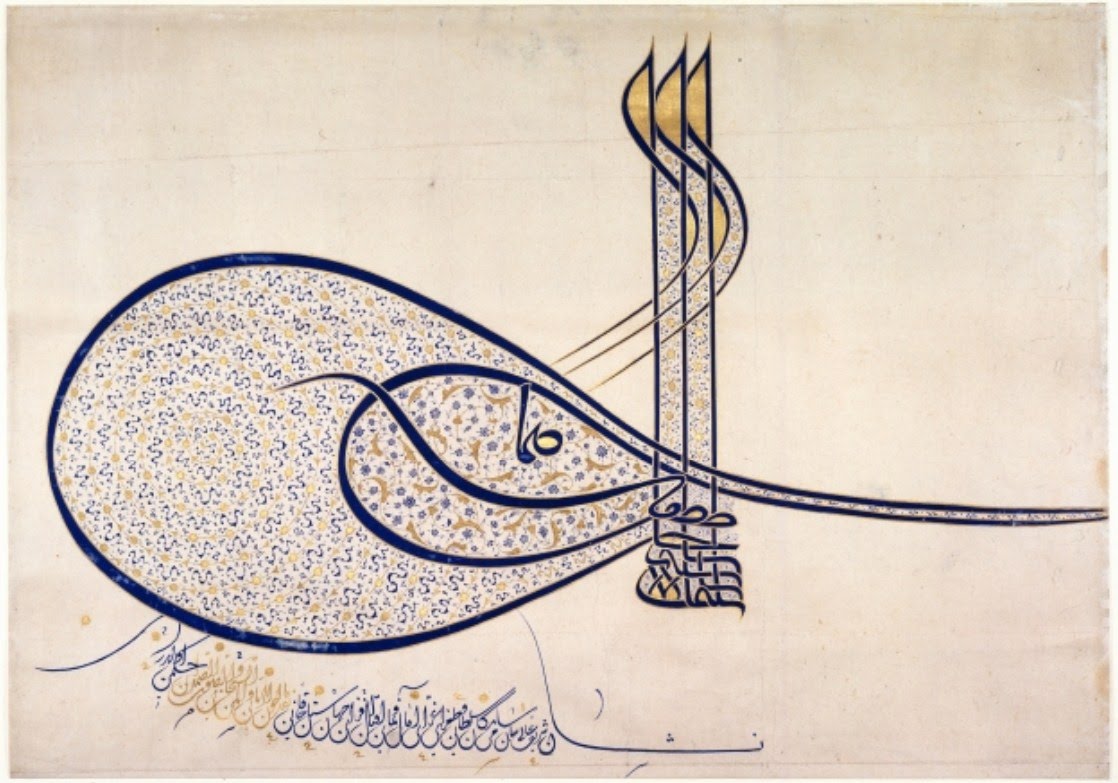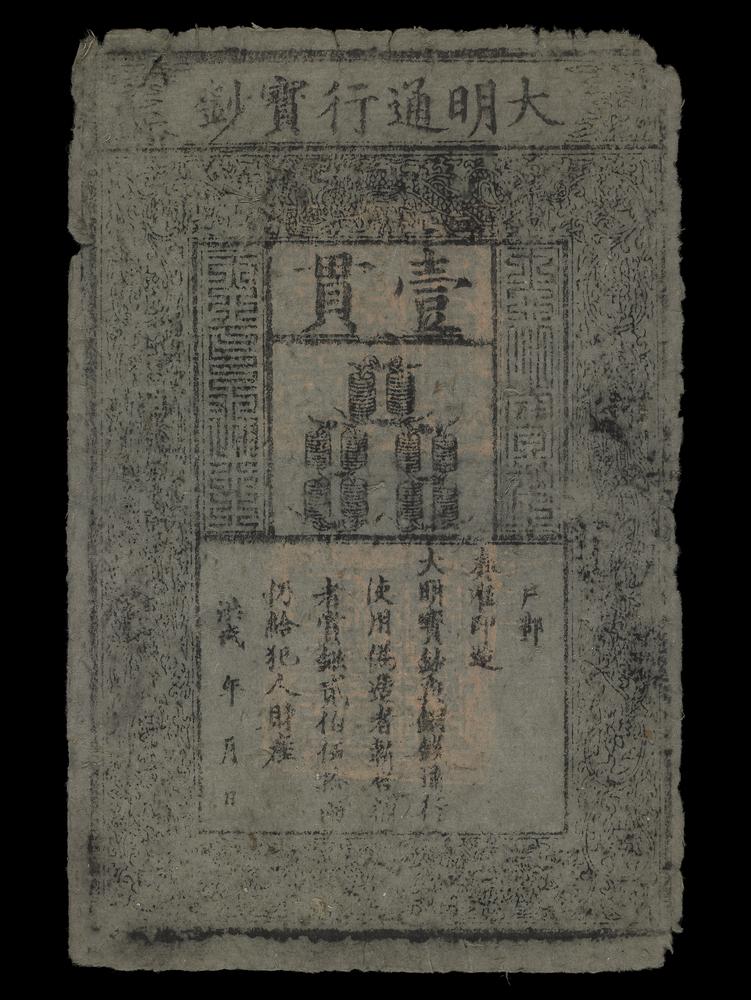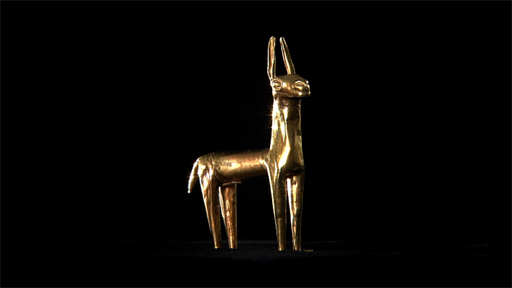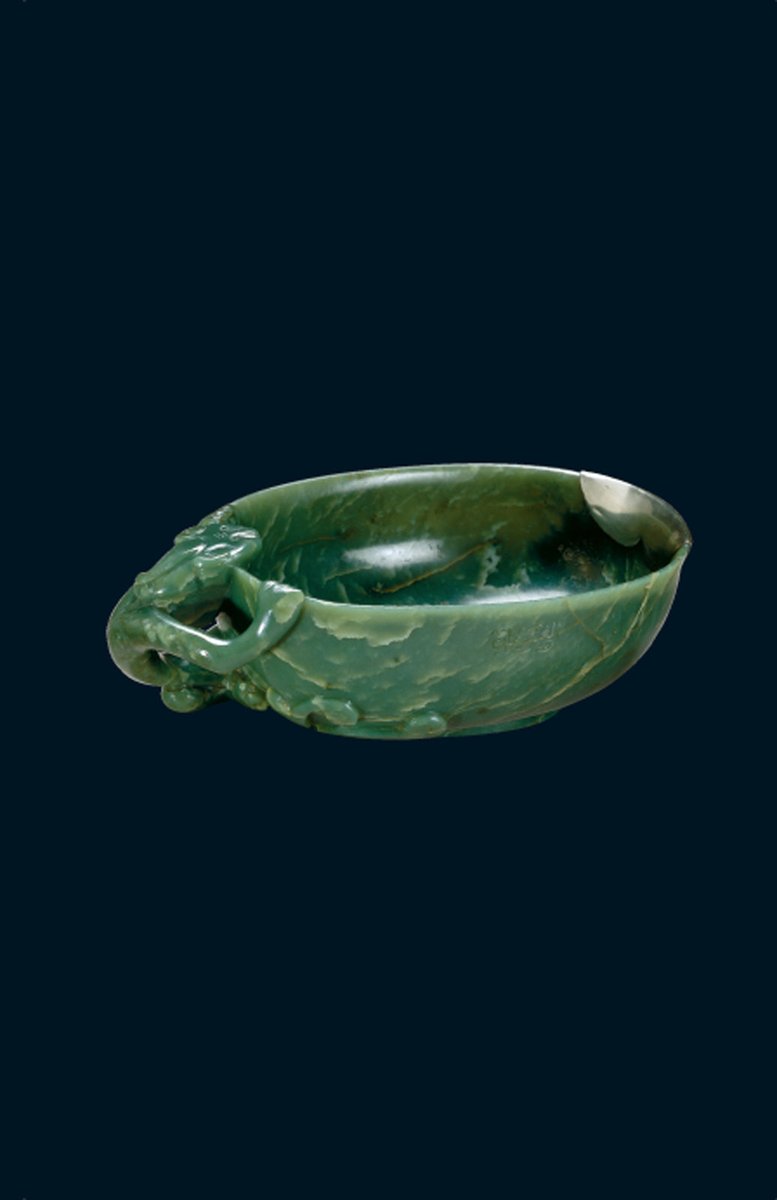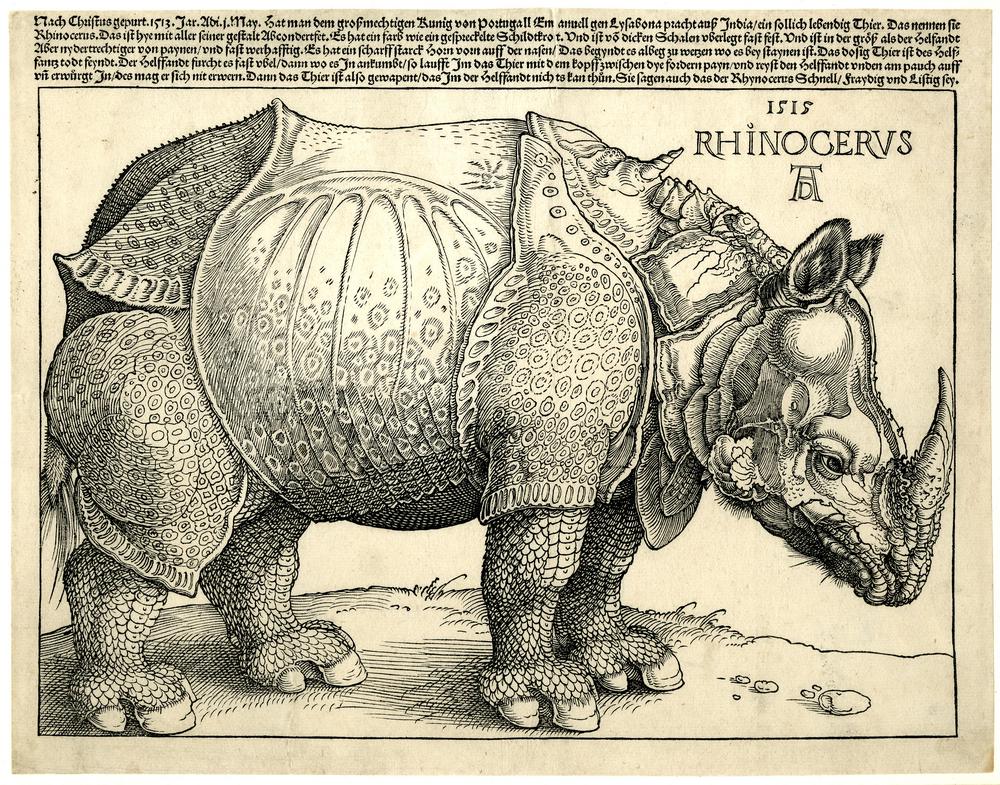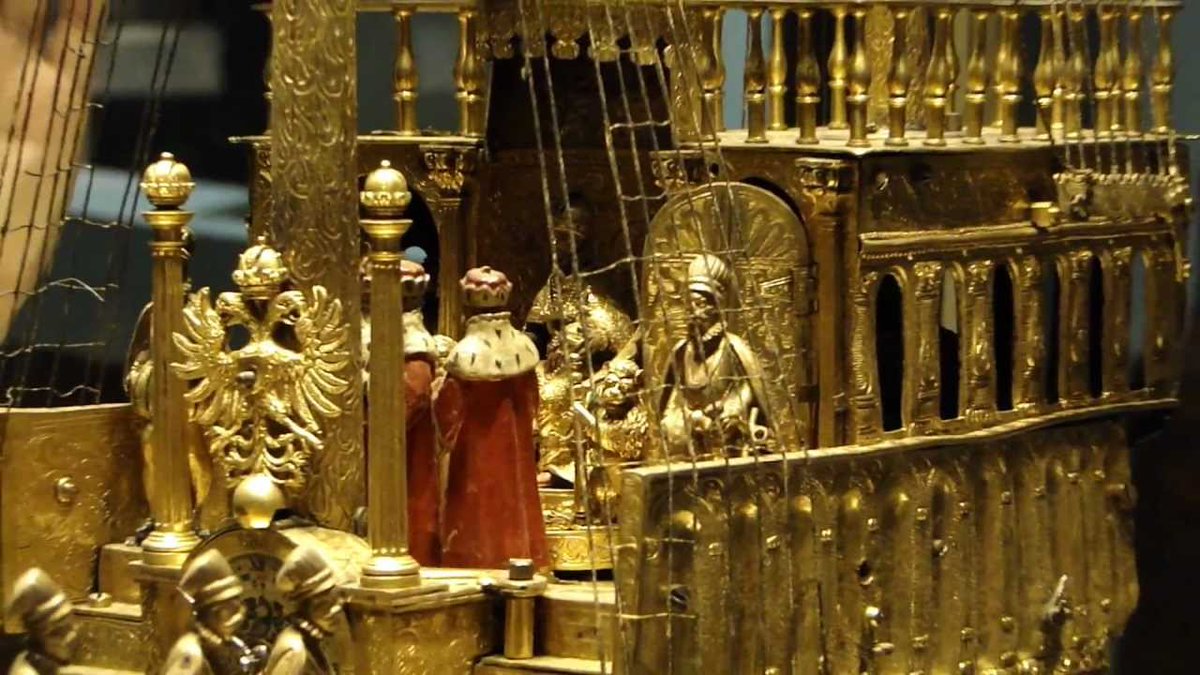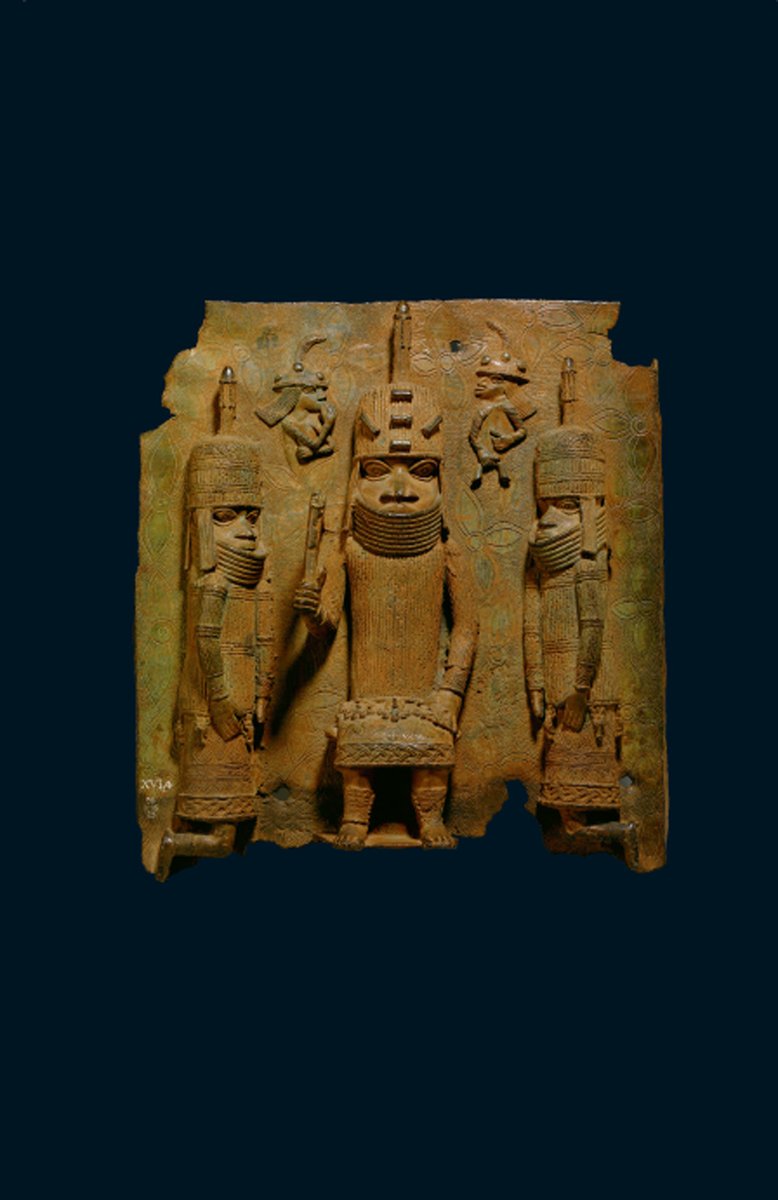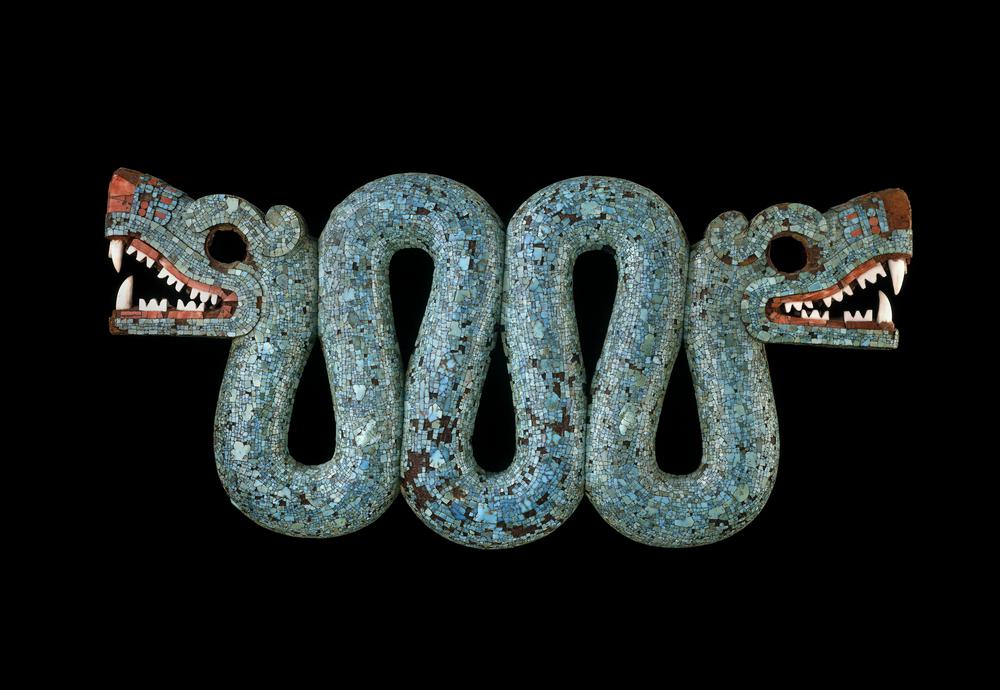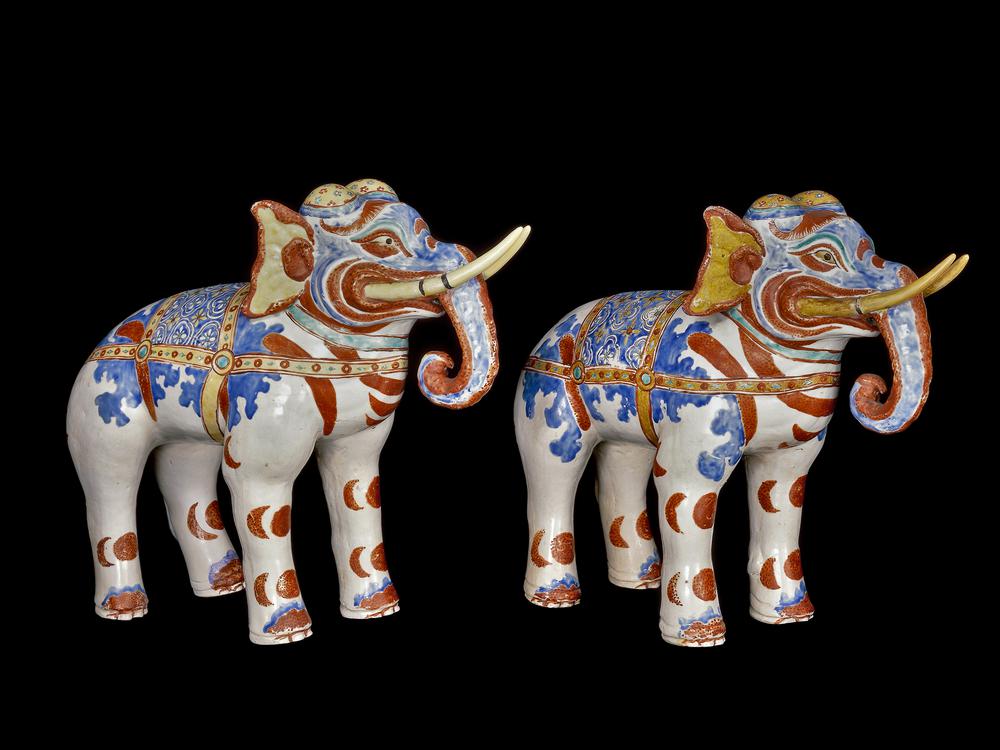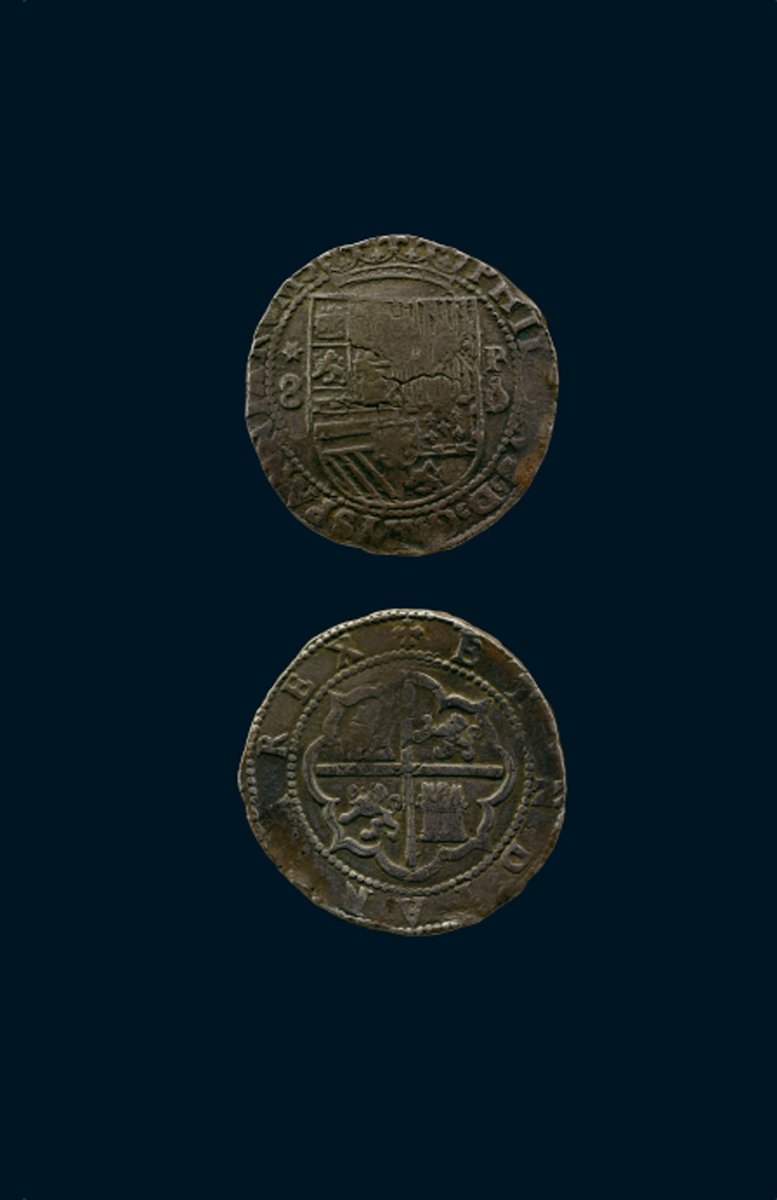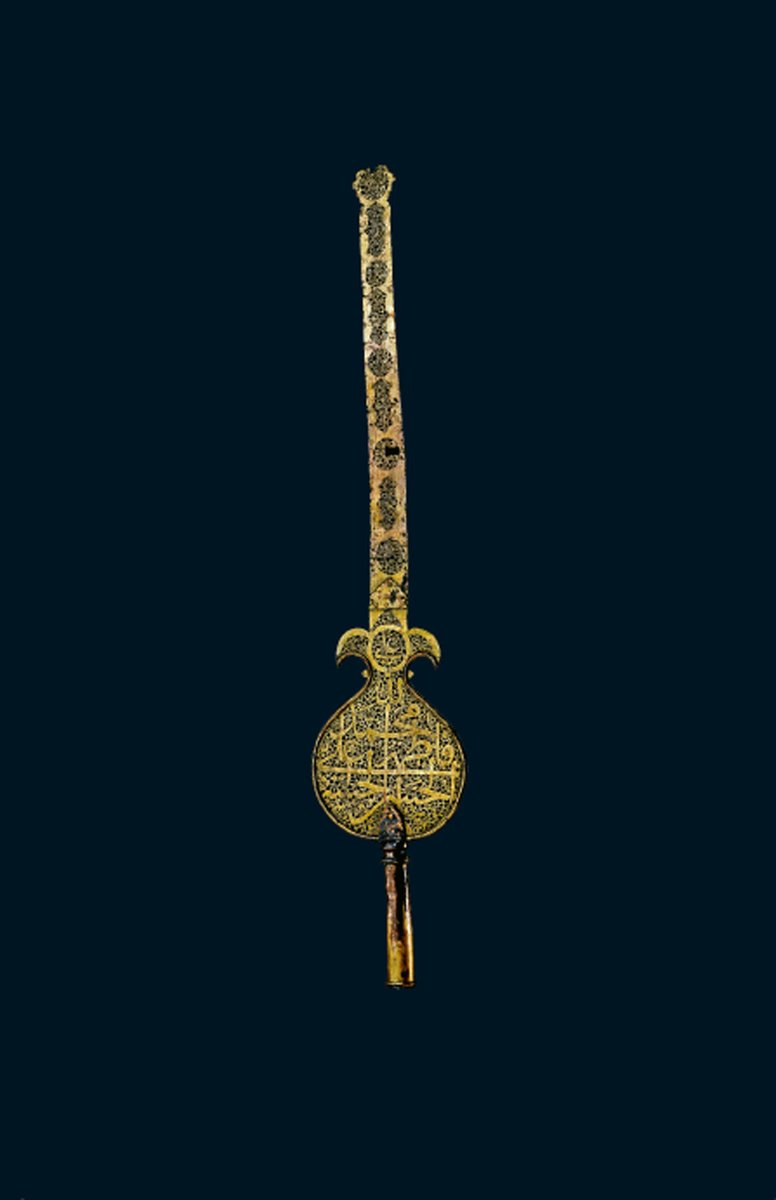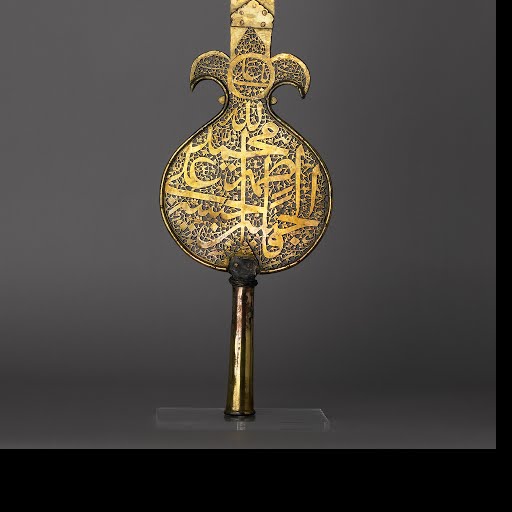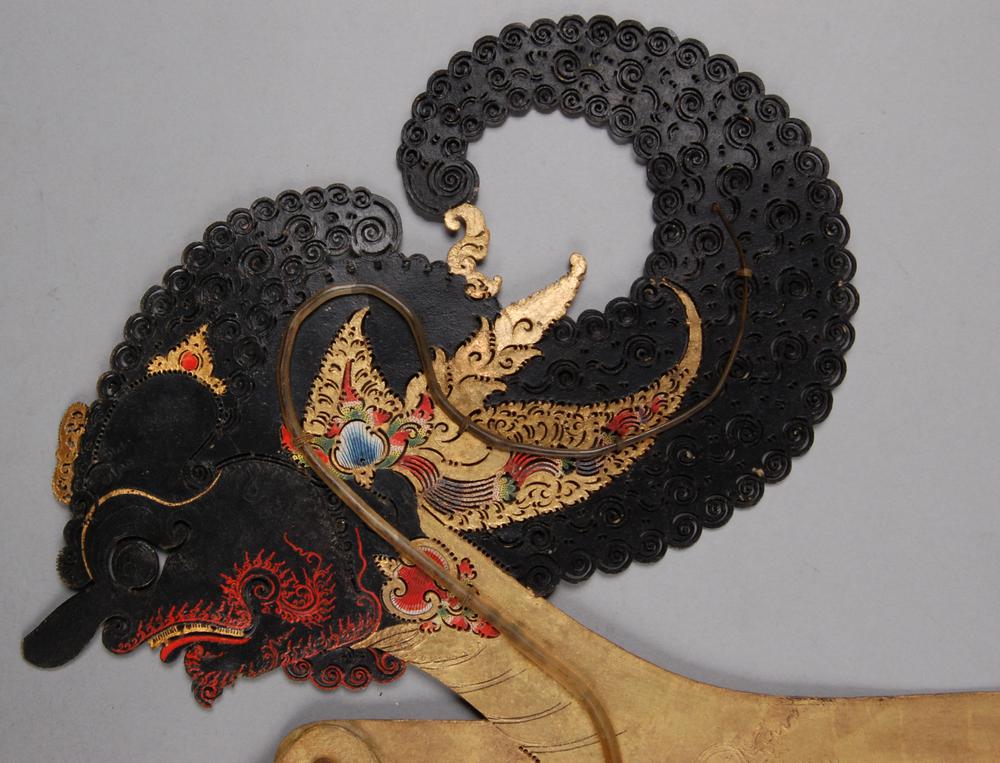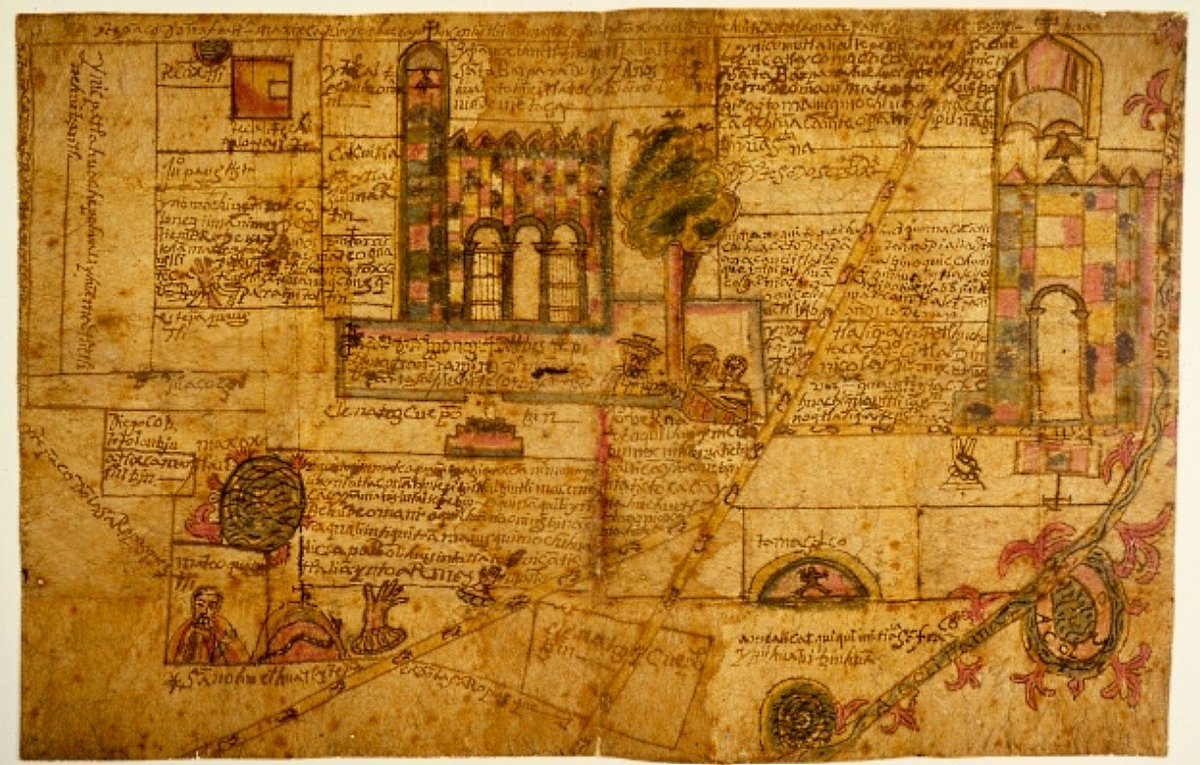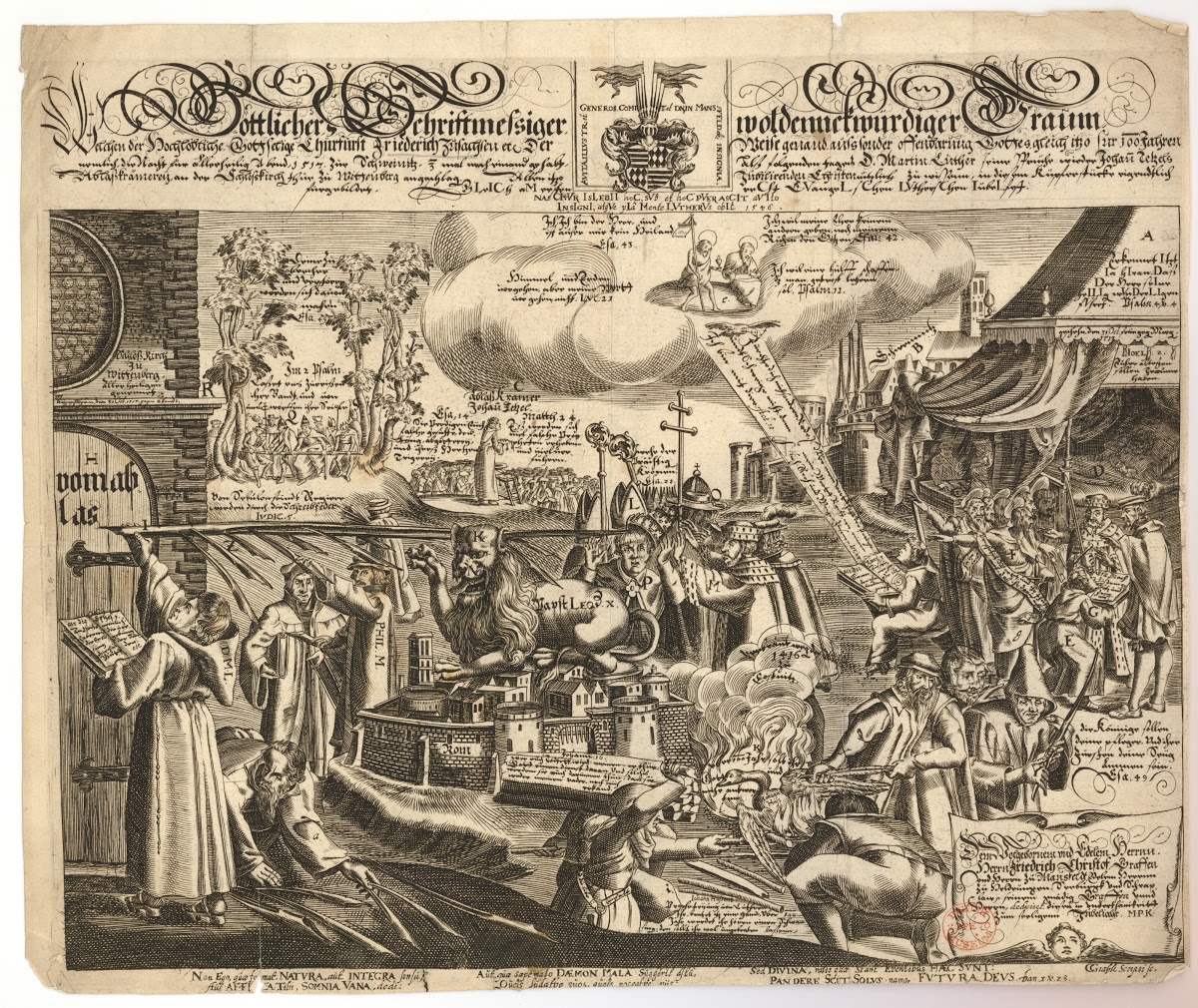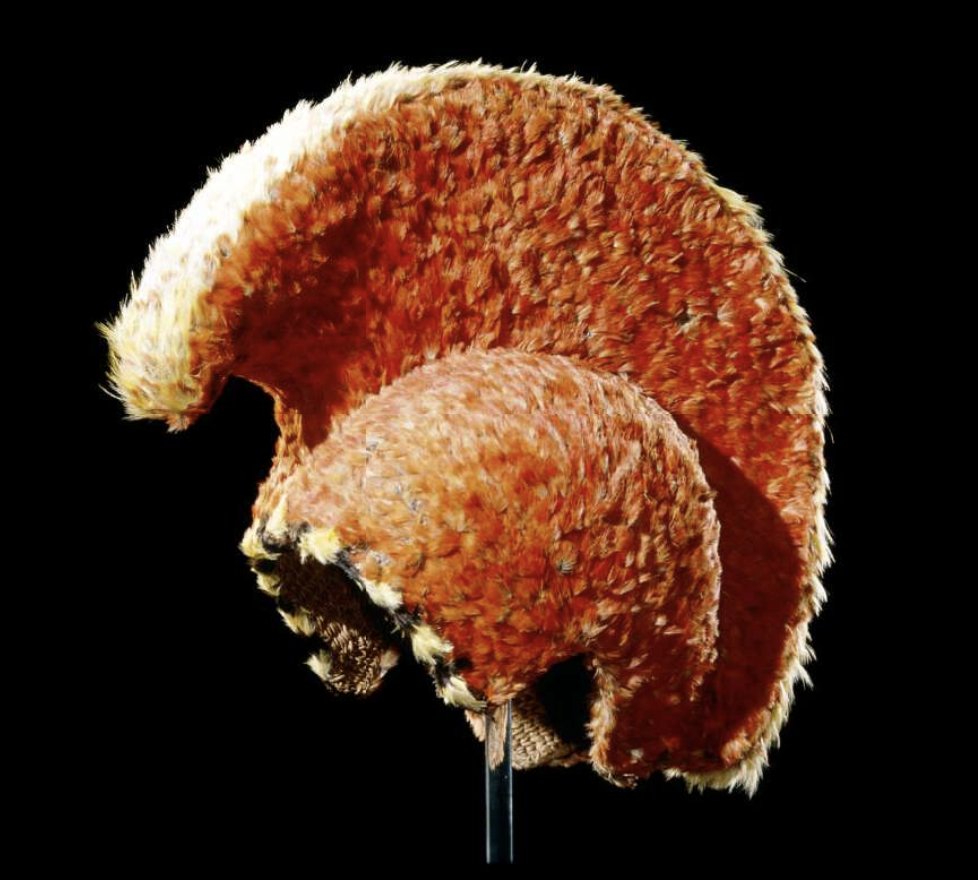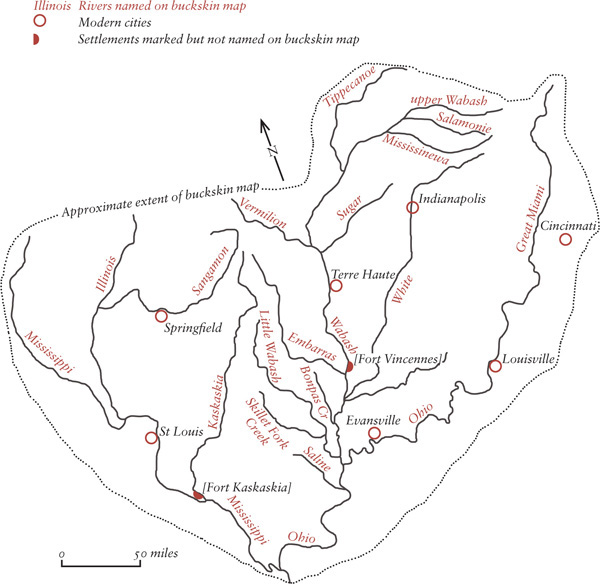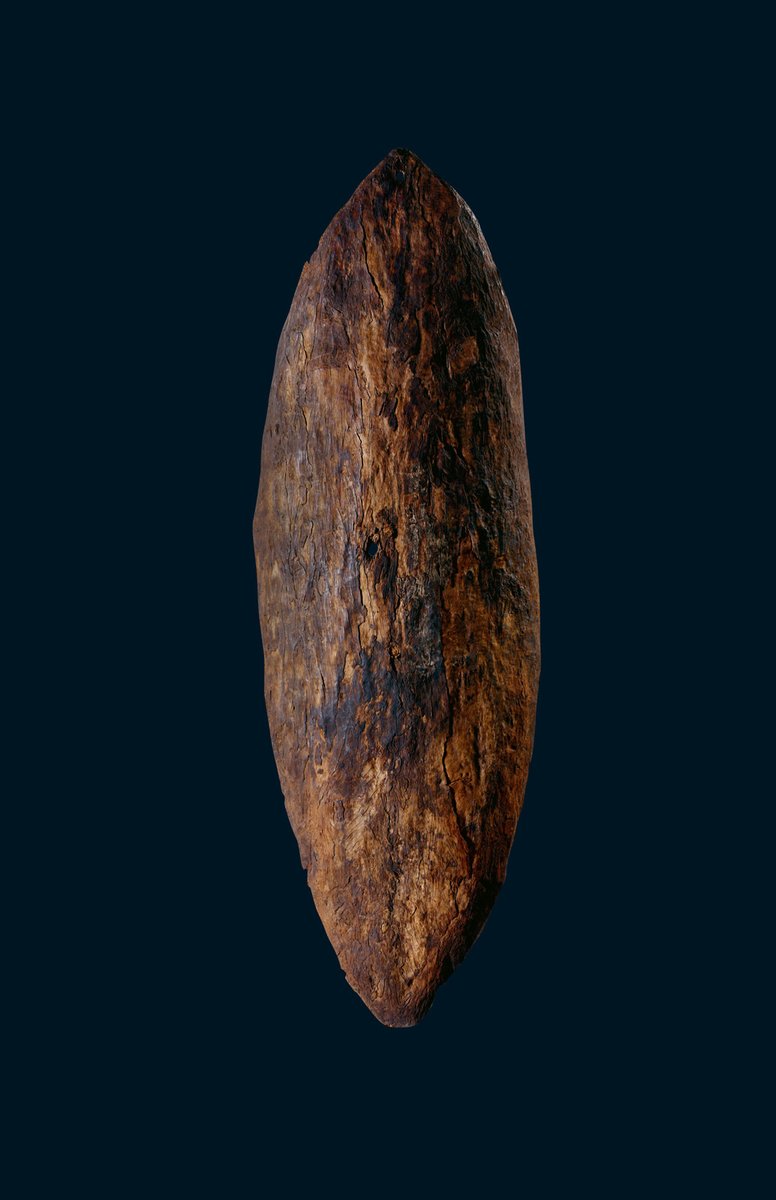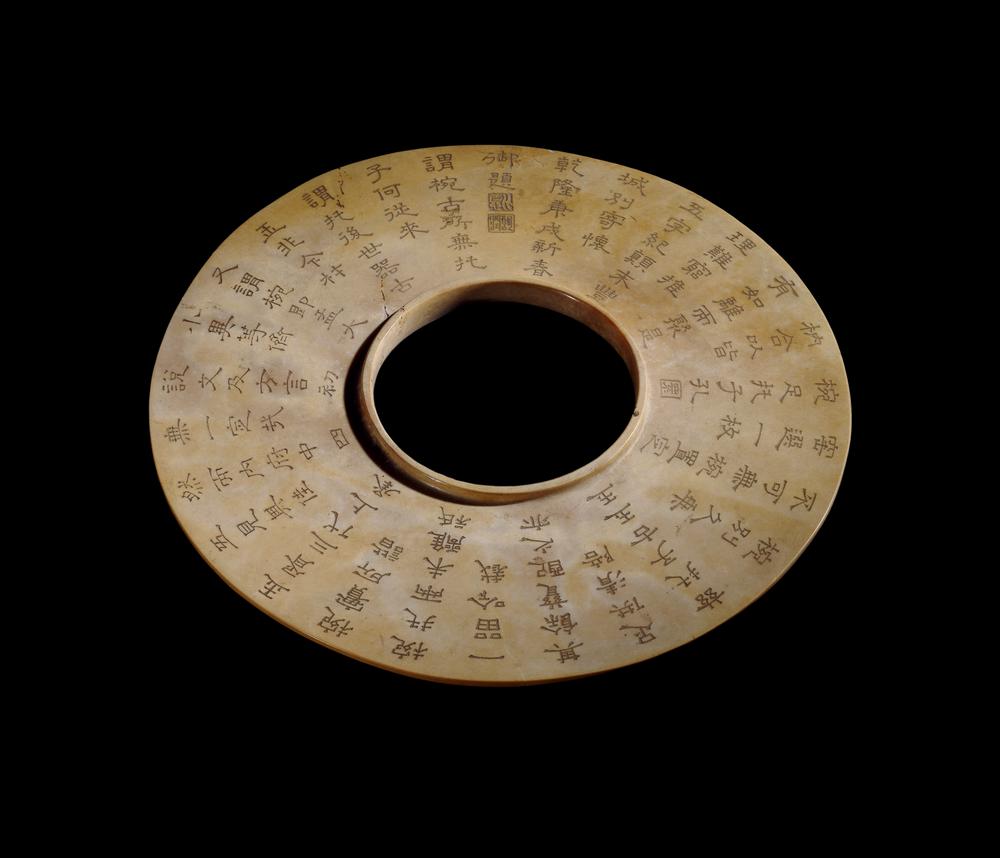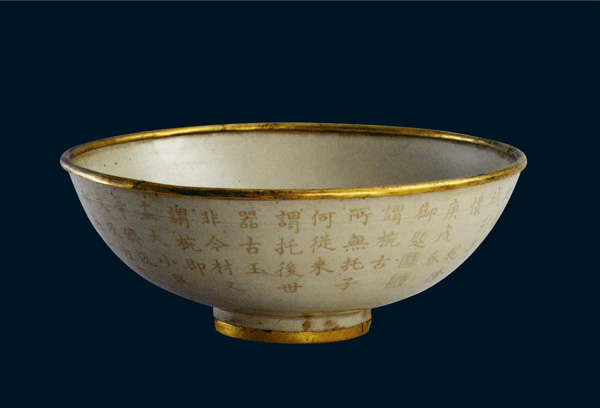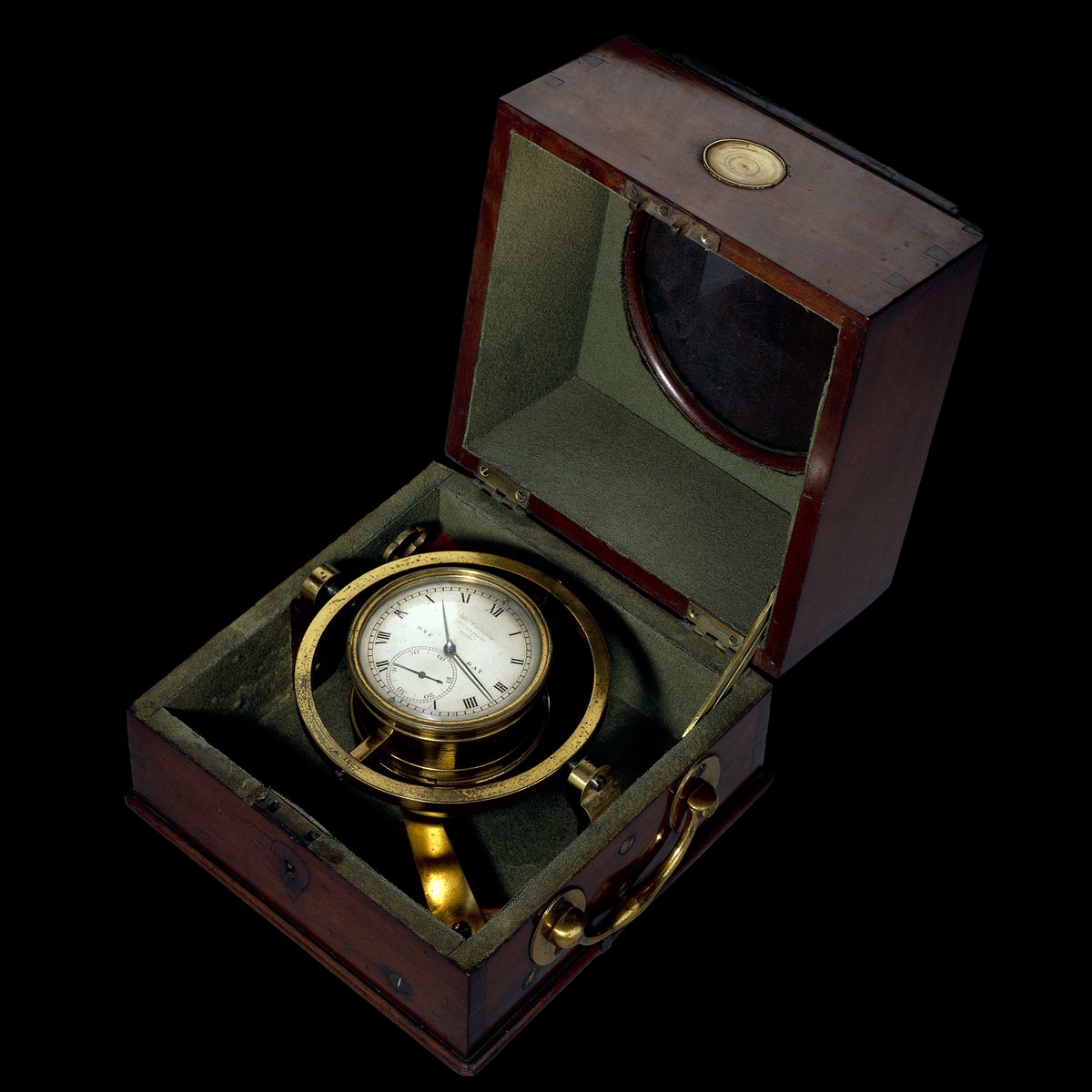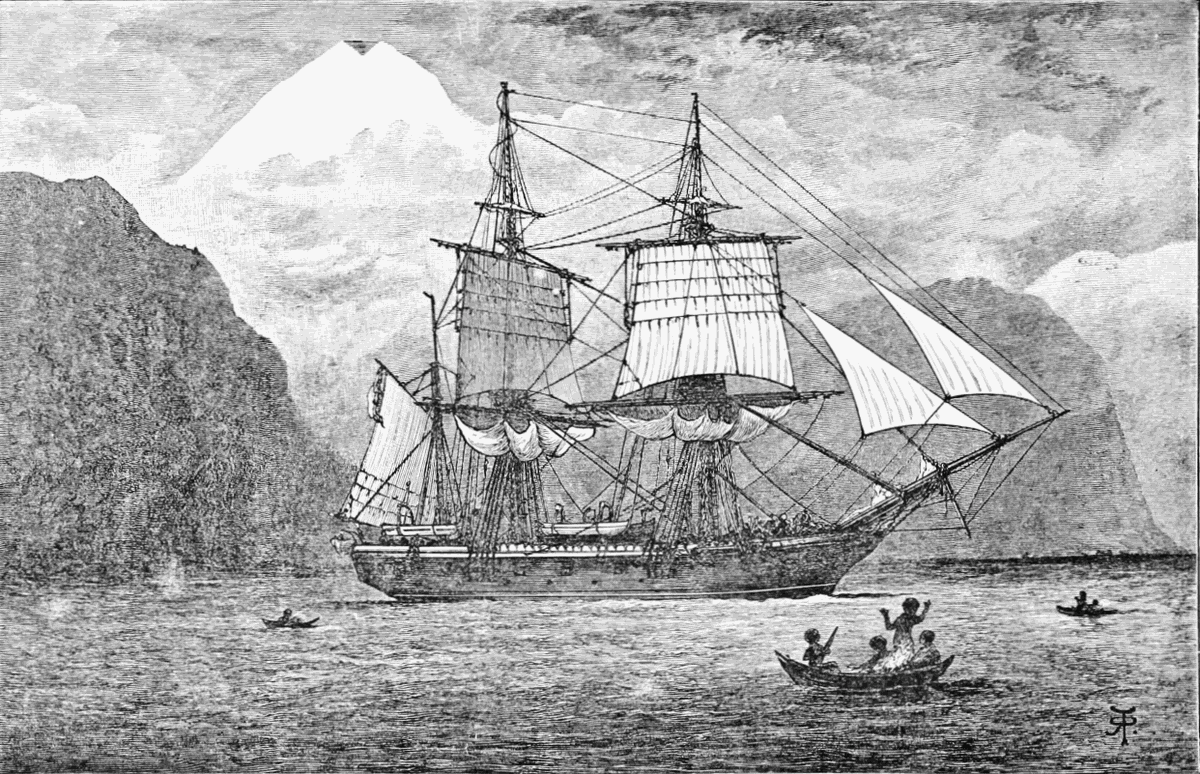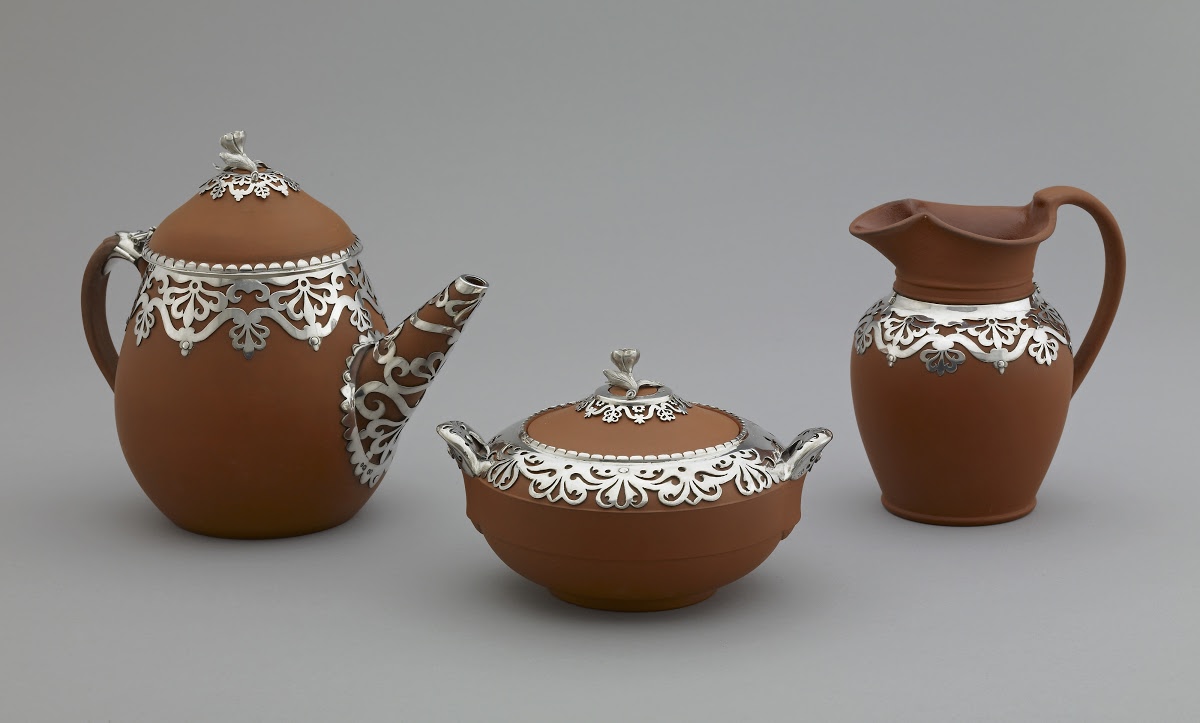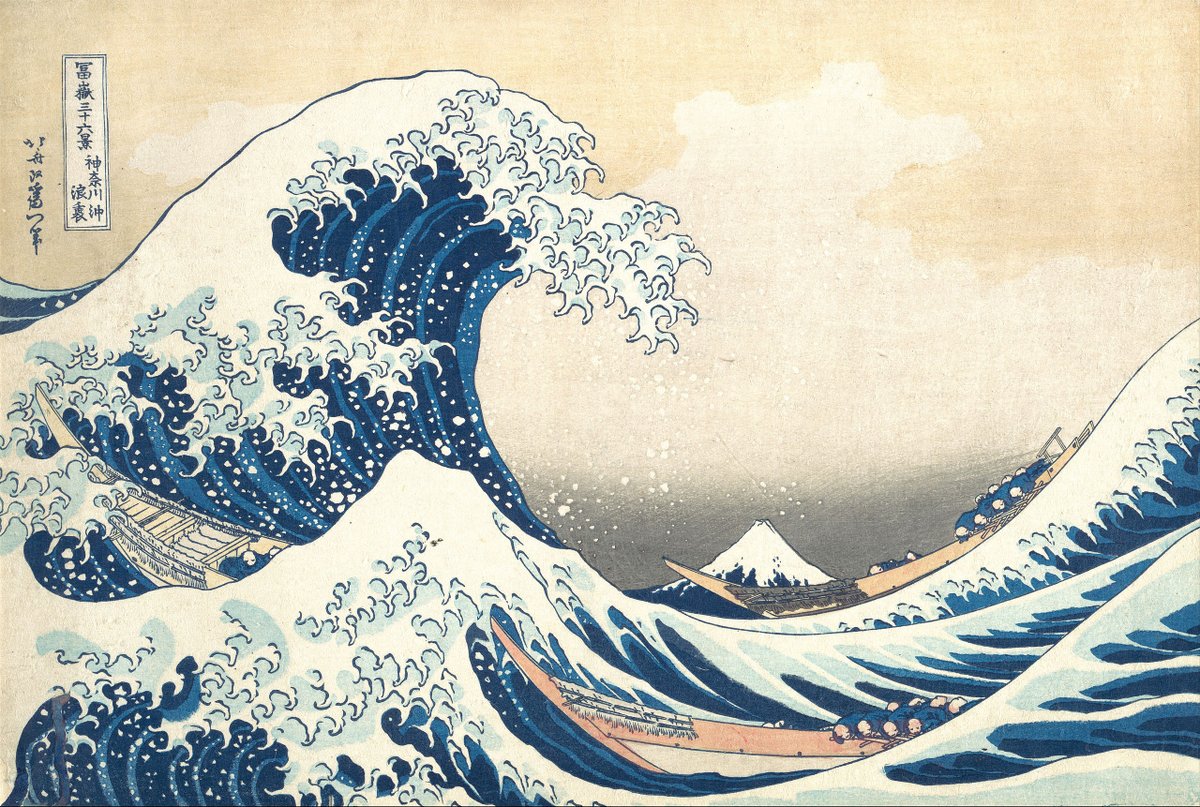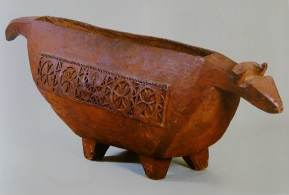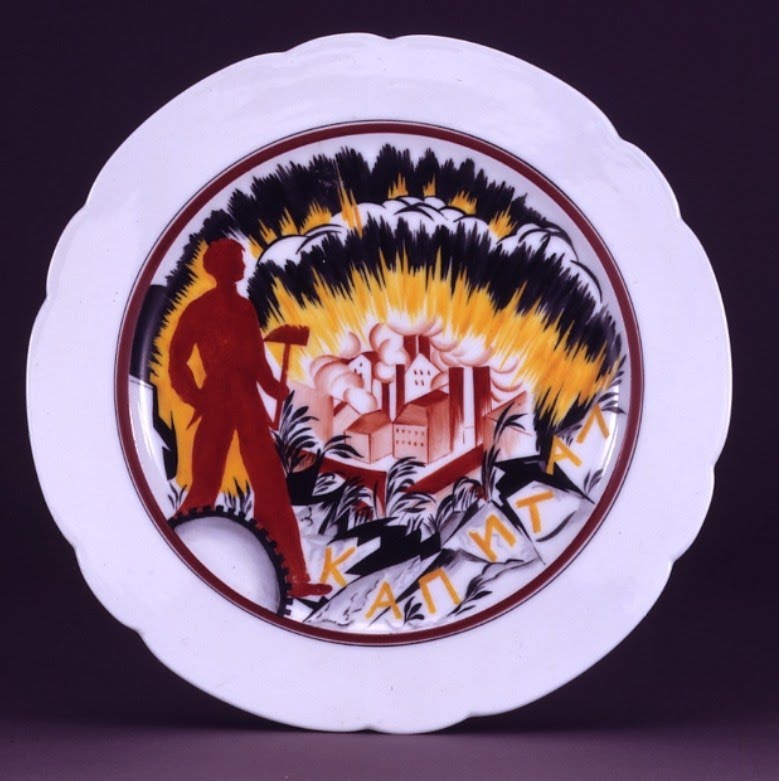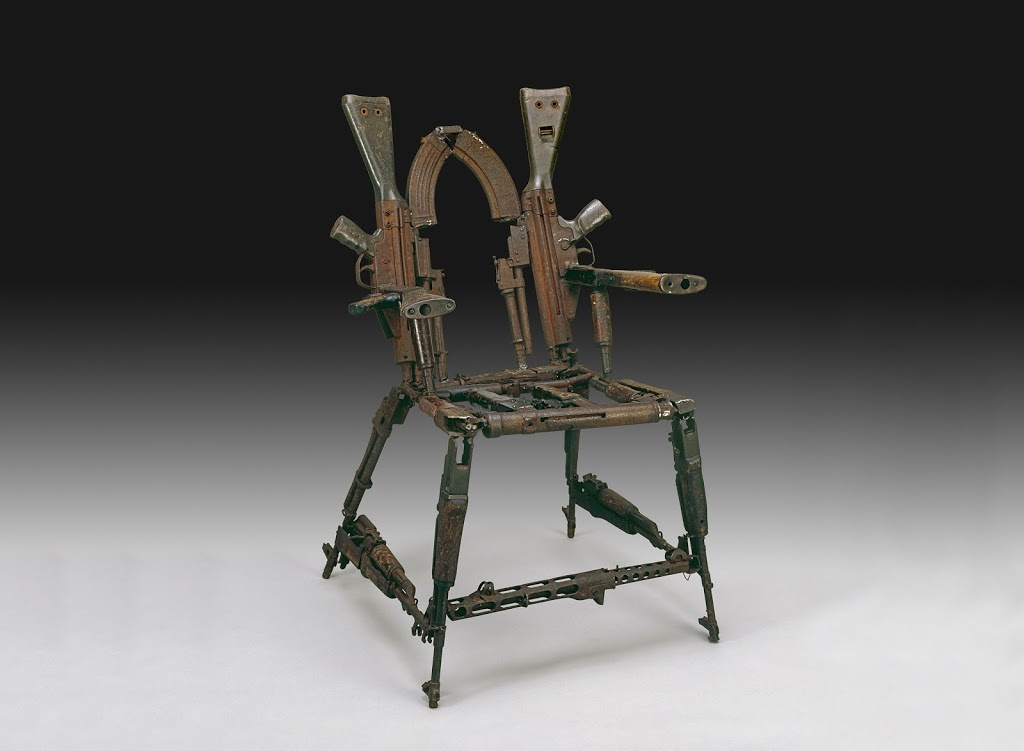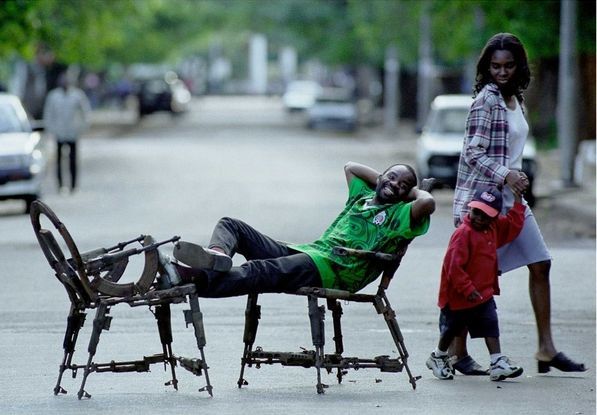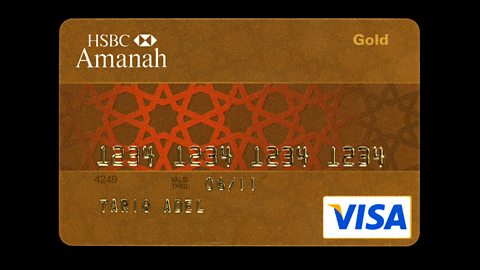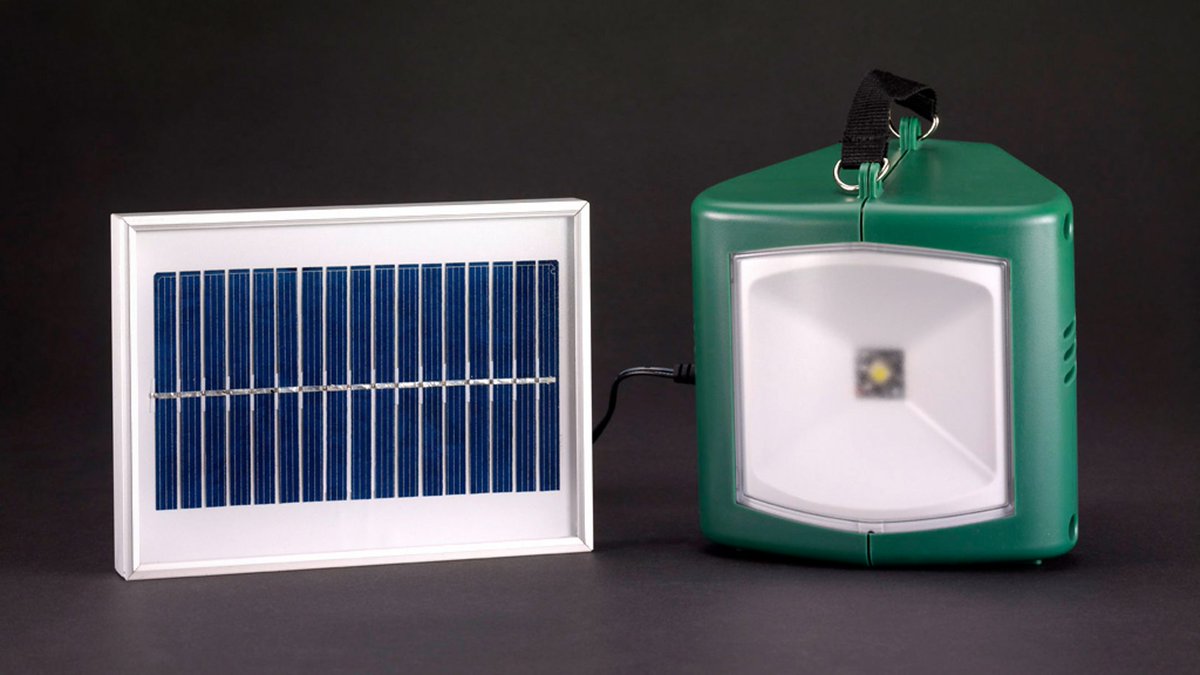Here's my contribution to Threadapalooza's 2020 kickoff
A History of the World in 100 Objects
A History of the World in 100 Objects
In 2010, the @britishmuseum published the greatest podcast of all time
It told the history of the world through 100 objects in their collection
An absolute must listen
It told the history of the world through 100 objects in their collection
An absolute must listen
Since podcasts don't have images
Here's every single item from the list, along with a fascinating tidbit
Here's every single item from the list, along with a fascinating tidbit
1. Mummy of Hornedjitef
The inside of his coffin is decorated with inscriptions of spells, images of gods who act as protectors, and constellations of stars - a personal star map.
The inside of his coffin is decorated with inscriptions of spells, images of gods who act as protectors, and constellations of stars - a personal star map.
2. Olduvai Stone Chopping Tool
This 2 million year old tool allowed early humans to eat bone marrow, which is the most nutritious part of the carcass.
Bone marrow is so valuable because we didn't have to compete for it - only a few other animals can eat it.
This 2 million year old tool allowed early humans to eat bone marrow, which is the most nutritious part of the carcass.
Bone marrow is so valuable because we didn't have to compete for it - only a few other animals can eat it.
3. Olduvai Handaxe
When you create a handaxe, it lights up the parts of your brain used for speech.
Whoever created this tool would have had the language abilities of a modern-day 7 year old.
When you create a handaxe, it lights up the parts of your brain used for speech.
Whoever created this tool would have had the language abilities of a modern-day 7 year old.
4. Swimming Reindeer
Carving these animals required an incredibly intimate knowledge of reindeer
It's so detailed, we can tell it was done during the fall - during their rutting and migration season
Carving these animals required an incredibly intimate knowledge of reindeer
It's so detailed, we can tell it was done during the fall - during their rutting and migration season
5. Clovis Spear Point
The ripples on this spear point are beautiful, but deadly.
They cause intense bleeding no matter where you hit. The blood loss weakens the animal so you can eventually finish it off.
The ripples on this spear point are beautiful, but deadly.
They cause intense bleeding no matter where you hit. The blood loss weakens the animal so you can eventually finish it off.
6. Bird Shaped Pestle
Thousands of years ago the plants we ate were borderline inedible, even poisonous
Other animals were more efficient at eating the tastiest, nutritious bits
We used cooking to carve out an evolutionary niche
Thousands of years ago the plants we ate were borderline inedible, even poisonous
Other animals were more efficient at eating the tastiest, nutritious bits
We used cooking to carve out an evolutionary niche
7. Ain Sakhri Lovers
This is the oldest known representation of a couple having sex
And if you view it from different angles, it represents both male and female genitalia
This is the oldest known representation of a couple having sex
And if you view it from different angles, it represents both male and female genitalia
8. Egyptian Clay Model of Cattle
When humans first domesticated cows, we hadn't yet developed lactose tolerance.
The early Egyptians likely tapped the cows' blood - either drinking directly, or adding to stews for extra protein.
When humans first domesticated cows, we hadn't yet developed lactose tolerance.
The early Egyptians likely tapped the cows' blood - either drinking directly, or adding to stews for extra protein.
9. Maya Maize God Statue
In Mayan mythology, the maize god was decapitated at harvest time but reborn again at the beginning of a new growing season
Just like the harvest
In Mayan mythology, the maize god was decapitated at harvest time but reborn again at the beginning of a new growing season
Just like the harvest
10. Jomon Pot
I originally thought pots were only useful as a way to store water
But they might have been more valuable as a way to keep insects and pests out of food
I originally thought pots were only useful as a way to store water
But they might have been more valuable as a way to keep insects and pests out of food
11. King Den's Sandal Label
This label identified one of the earliest pharaohs as he made his way into the afterlife
Shoes have been used to show status for thousands of years
This label identified one of the earliest pharaohs as he made his way into the afterlife
Shoes have been used to show status for thousands of years
12. Standard of Ur
This is the first object that used more than one material
The lapis lazuli came from Afghanistan, the red marble from India, and the shells from the Persian Gulf
This is the first object that used more than one material
The lapis lazuli came from Afghanistan, the red marble from India, and the shells from the Persian Gulf
13. Indus Seal
The Indus Valley Civilization remains a mystery - we still can't read the markings on this seal.
Our knowledge of history is often based on burial sites. Since we haven't found any, it's likely they cremated their dead.
The Indus Valley Civilization remains a mystery - we still can't read the markings on this seal.
Our knowledge of history is often based on burial sites. Since we haven't found any, it's likely they cremated their dead.
14. Jade Axe
This axehead was created 5000 years ago, and found near Canterbury England
Researchers were able to track its origins
Not just to a quarry in the Italian Alps, but to the exact boulder
This axehead was created 5000 years ago, and found near Canterbury England
Researchers were able to track its origins
Not just to a quarry in the Italian Alps, but to the exact boulder
15. Early Writing Tablet
Much like modern startups, the Mesopotamians were partially paid in beer
This tablet details how much the workers should receive
Much like modern startups, the Mesopotamians were partially paid in beer
This tablet details how much the workers should receive
16. Flood Tablet
Before this tablet, the flood story was believed to only be from the Bible
When the first English scholar read it in 1872, he was so excited that he started running around the room, taking his clothes off
Before this tablet, the flood story was believed to only be from the Bible
When the first English scholar read it in 1872, he was so excited that he started running around the room, taking his clothes off
17. Rhind Mathematical Papyrus
Since papyruses are extremely sensitive to humidity and light, they're stored in a special room
It's dry, stuffy, and dark... the exact conditions of an Egyptian tomb
Since papyruses are extremely sensitive to humidity and light, they're stored in a special room
It's dry, stuffy, and dark... the exact conditions of an Egyptian tomb
18. Minoan Bull Leaper
This sculpture comes from Rethymnon, a town on the north side of Crete
People are still doing this in France and Spain - check out the QTs for a video
This sculpture comes from Rethymnon, a town on the north side of Crete
People are still doing this in France and Spain - check out the QTs for a video
19. Mold Gold Cape
When the burial site was discovered in 1833, they saved the gold but not the body
Leaving us with a mystery - why is it built for a small slim person, not a warrior chieftain?
When the burial site was discovered in 1833, they saved the gold but not the body
Leaving us with a mystery - why is it built for a small slim person, not a warrior chieftain?
20. Statue of Ramesses II
This was by far the largest Egyptian sculpture the British public had ever seen, inspiring these famous lines from Shelley
"My name is Ozymandias, king of kings:
Look on my works, ye Mighty, and despair!"
This was by far the largest Egyptian sculpture the British public had ever seen, inspiring these famous lines from Shelley
"My name is Ozymandias, king of kings:
Look on my works, ye Mighty, and despair!"
21. Lachish Reliefs
The Assyrians were the first to conquer the Middle East
Their campaign against the Kingdom of Judah displaced 200k people, making these reliefs an early depiction of refugees
The Assyrians were the first to conquer the Middle East
Their campaign against the Kingdom of Judah displaced 200k people, making these reliefs an early depiction of refugees
22. Sphinx of Taharqo
In 728 BC, the traditional balance of power flipped when the Kingdom of Kush conquered Egypt
This only lasted for ~150 years, but produced striking works of art that were a mix of African faces and Egyptian styles
In 728 BC, the traditional balance of power flipped when the Kingdom of Kush conquered Egypt
This only lasted for ~150 years, but produced striking works of art that were a mix of African faces and Egyptian styles
23. Chinese Zhou Ritual Vessel
An inscription inside the bowl tells us its story - it was made after a great victory, but also as a sacred vessel to honor a late father
No bamboo or paper writing survives from this period, so these inscriptions are all we have left
An inscription inside the bowl tells us its story - it was made after a great victory, but also as a sacred vessel to honor a late father
No bamboo or paper writing survives from this period, so these inscriptions are all we have left
24. Paracas Textile
Because Andean civilizations prized textile craftsmanship over stone and metal, relatively few artifacts survived
Because Andean civilizations prized textile craftsmanship over stone and metal, relatively few artifacts survived
25. Gold Coin of Croesus
The story of coins is actually a story of technology
Before coins, we had no need to purify gold
But as soon as the Lydians created coins, we immediately searched for (and found) a way to create pure gold
The story of coins is actually a story of technology
Before coins, we had no need to purify gold
But as soon as the Lydians created coins, we immediately searched for (and found) a way to create pure gold
26. Oxus Chariot Model
Details on this Persian figure are invisible to us
-The passenger wears a stylish, expensive overcoat
-The relief on the front of the chariot is an Egyptian God, Bes
-They're wearing clothes from NW Iran, but the figure was found in NE Afghanistan
Details on this Persian figure are invisible to us
-The passenger wears a stylish, expensive overcoat
-The relief on the front of the chariot is an Egyptian God, Bes
-They're wearing clothes from NW Iran, but the figure was found in NE Afghanistan
27. Parthenon Sculpture: Centaur and Lapith
The most astounding part of Greek sculpture is how lifelike it is
It took millenia before painting was similarly accurate
And most other civilizations had some sort of stylized art
How did the Greeks figure it out?
The most astounding part of Greek sculpture is how lifelike it is
It took millenia before painting was similarly accurate
And most other civilizations had some sort of stylized art
How did the Greeks figure it out?
28. Basse-Yutz Flagons
We have no written records of the ancient Northern Europeans (except shit-talking from the Greeks)
But the incredible detail on these objects shows they weren't barbarians
We have no written records of the ancient Northern Europeans (except shit-talking from the Greeks)
But the incredible detail on these objects shows they weren't barbarians
29. Olmec Stone Mask
These masks are the only indication we have of what the Olmecs might have looked like
Any skeletons would have dissolved in the acid soil of the rainforest
These masks are the only indication we have of what the Olmecs might have looked like
Any skeletons would have dissolved in the acid soil of the rainforest
30. Chinese Bronze Bell
These bells weren't just musical instruments
The amount of bronze used for each of these bells was so highly regulated, local communities could use them as weights and measures
These bells weren't just musical instruments
The amount of bronze used for each of these bells was so highly regulated, local communities could use them as weights and measures
31. Coin with Head of Alexander
Alexander's conquests were first bankrolled by the rich gold and silver mines of Thrace
He then conquered Persia, capturing 5 million kilos of gold
Alexander's conquests were first bankrolled by the rich gold and silver mines of Thrace
He then conquered Persia, capturing 5 million kilos of gold
32. Pillar of Ashoka
Ashoka started his reign by killing his brothers and waging a violent war
But this affected him deeply, and he found religion
This fragment is from his 'Sixth Pillar Edict,' declaring he will bring happiness to all of his subjects, regardless of class
Ashoka started his reign by killing his brothers and waging a violent war
But this affected him deeply, and he found religion
This fragment is from his 'Sixth Pillar Edict,' declaring he will bring happiness to all of his subjects, regardless of class
33. Rosetta Stone
This boring document on tax concessions is the most visited object in the British Museum
This boring document on tax concessions is the most visited object in the British Museum
34. Chinese Han Lacquer Cup
Lacquer comes from a specific kind of tree sap
The sap is dangerous because it has the same oily irritant as poison ivy - but that chemical is also what makes lacquerware beautiful
Lacquer comes from a specific kind of tree sap
The sap is dangerous because it has the same oily irritant as poison ivy - but that chemical is also what makes lacquerware beautiful
35. Head of Augustus
A Sudanese queen captured a series of Roman forts in southern Egypt, and brought this head back to Meroë
She buried it under the steps of a temple dedicated to victory, so that everyone would literally be crushing the Roman Emperor under their feet
A Sudanese queen captured a series of Roman forts in southern Egypt, and brought this head back to Meroë
She buried it under the steps of a temple dedicated to victory, so that everyone would literally be crushing the Roman Emperor under their feet
37. North American Otter Pipe
Tobacco was originally smoked by wrapping it in the leaves of other plants
As it made its way north, the cold winters (and a seasonal lack of fresh leaves) forced a switch to pipes
Tobacco was originally smoked by wrapping it in the leaves of other plants
As it made its way north, the cold winters (and a seasonal lack of fresh leaves) forced a switch to pipes
38. Ceremonial Ballgame Belt
In one of the Meso-American creation myths, two twins played ball with the lord of death
When Aztecs took to the court, they were living out the spiritual conflict between life and death
In one of the Meso-American creation myths, two twins played ball with the lord of death
When Aztecs took to the court, they were living out the spiritual conflict between life and death
39. Admonitions Scroll
Emperor Xiaowu told his favorite consort, "Now that you are 30, it's time I exchanged you for someone younger."
He was joking, but she still murdered him that evening.
To remind everybody how to behave, the greatest artist illustrated the greatest poem.
Emperor Xiaowu told his favorite consort, "Now that you are 30, it's time I exchanged you for someone younger."
He was joking, but she still murdered him that evening.
To remind everybody how to behave, the greatest artist illustrated the greatest poem.
40. Hoxne Pepper Pot
The Hoxne Hoard was buried in England by a wealthy Roman family around AD 400
In 1992, a farmer lost a hammer. Searching for it with a metal detector, he stumbled upon this treasure
Both the hammer and the artifacts are now in the British Museum
The Hoxne Hoard was buried in England by a wealthy Roman family around AD 400
In 1992, a farmer lost a hammer. Searching for it with a metal detector, he stumbled upon this treasure
Both the hammer and the artifacts are now in the British Museum
41. Seated Buddha from Gandhara
At first, Buddha was represented through symbols - the tree under which he achieved enlightenment, a set of footprints, etc
It wasn't until hundreds of years after his death that he was represented in human form
At first, Buddha was represented through symbols - the tree under which he achieved enlightenment, a set of footprints, etc
It wasn't until hundreds of years after his death that he was represented in human form
42. Gold Coins of Kumaragupta I
The horse on this coin depicts the Ashvamedha
A stallion was released into the wild. An escort of princes followed it, prevented it from mating
At the end of the year, the horse was captured and killed in front of the king
The horse on this coin depicts the Ashvamedha
A stallion was released into the wild. An escort of princes followed it, prevented it from mating
At the end of the year, the horse was captured and killed in front of the king
43. Plate showing Shapur II
Through this symbolic killing of a wild deer, the king is imposing divine order on demonic chaos
Unlike other items, this isn't just propaganda. Shapur II successfully ruled from when he came of age until his death at 70
Through this symbolic killing of a wild deer, the king is imposing divine order on demonic chaos
Unlike other items, this isn't just propaganda. Shapur II successfully ruled from when he came of age until his death at 70
44. Hinton St Mary Mosaic
For the first few centuries of Christianity, it was inconceivable to depict Jesus in art
This changed as the Romans adopted Christianity, and wanted to see Jesus as they could see their old gods
For the first few centuries of Christianity, it was inconceivable to depict Jesus in art
This changed as the Romans adopted Christianity, and wanted to see Jesus as they could see their old gods
45. Arabian Bronze Hand
This bronze hand was offered to an Arabian god
In the 370s, the local economy collapsed. Roman converts to Christianity no longer needed frankincense to worship
Multiple religions tried to fill the vacuum, until Islam took hold in 628
This bronze hand was offered to an Arabian god
In the 370s, the local economy collapsed. Roman converts to Christianity no longer needed frankincense to worship
Multiple religions tried to fill the vacuum, until Islam took hold in 628
46. Gold Coins of Abd Al-Malik
In only 50 years, Arabian armies conquered the Middle East. Islam spread 10x faster than Christianity or Buddhism.
This coin is the first depiction of a Muslim. But only one year later, human imagery was removed from coins and the public sphere.
In only 50 years, Arabian armies conquered the Middle East. Islam spread 10x faster than Christianity or Buddhism.
This coin is the first depiction of a Muslim. But only one year later, human imagery was removed from coins and the public sphere.
47. Sutton Hoo Helmet
This treasure radically changed how we thought of the Dark Ages
Before it was discovered, historians thought of them as a lost period - devoid of culture and wealth
This treasure radically changed how we thought of the Dark Ages
Before it was discovered, historians thought of them as a lost period - devoid of culture and wealth
48. Moche Warrior Pot
The Moche made some dank-ass pots
The second one shows defeated warriors being thrown off a cliff
The Moche made some dank-ass pots
The second one shows defeated warriors being thrown off a cliff
49. Korean Roof Tile
This tile marks the shift between thatched and tiled roofs
Along with being a status symbol, tiled roofs helped prevent the greatest threat to ancient cities
Fire
This tile marks the shift between thatched and tiled roofs
Along with being a status symbol, tiled roofs helped prevent the greatest threat to ancient cities
Fire
50. Silk Princess Painting
Once upon a time, a princess lived in a land of silk
Her father, the emperor, decided she must marry the king of the distant land of jade
The princess smuggled the secret of silk to her new land, hiding everything in her headdress
Once upon a time, a princess lived in a land of silk
Her father, the emperor, decided she must marry the king of the distant land of jade
The princess smuggled the secret of silk to her new land, hiding everything in her headdress
51. Maya Relief of Royal Blood-letting
In this sculpture, the queen is pulling a rope with thorns through her tongue
This pain would, after ritual preparation, send her into a visionary trance
In this sculpture, the queen is pulling a rope with thorns through her tongue
This pain would, after ritual preparation, send her into a visionary trance
52. Harem Wall-painting Fragments
Not much survives from the Abbasid era in Baghdad, because the Mongols destroyed the city in 1258
The Mongols also caused a decline in farming. They destroyed canals, and the depopulated country couldn't maintain the remaining ones
Not much survives from the Abbasid era in Baghdad, because the Mongols destroyed the city in 1258
The Mongols also caused a decline in farming. They destroyed canals, and the depopulated country couldn't maintain the remaining ones
53. Lothair Crystal
Rock crystal cannot be chiseled because it is so incredibly hard
To make this, an artisan ground out the images with abrasive powder
Rock crystal cannot be chiseled because it is so incredibly hard
To make this, an artisan ground out the images with abrasive powder
54. Statue of Tara
This Sri Lankan sculpture is 3/4th life size
Her right hand is in the gesture of granting a wish - potentially connected to her symbolic role of guiding us to enlightenment
This Sri Lankan sculpture is 3/4th life size
Her right hand is in the gesture of granting a wish - potentially connected to her symbolic role of guiding us to enlightenment
55. Chinese Tang Tomb Figures
Between 750 and 907, the Abbasid Empire and the Tang Dynasty created a single market for luxury goods stretching from Morocco to Japan
Europe was an undeveloped backwater, a patchwork of small kingdoms and precarious communities
Between 750 and 907, the Abbasid Empire and the Tang Dynasty created a single market for luxury goods stretching from Morocco to Japan
Europe was an undeveloped backwater, a patchwork of small kingdoms and precarious communities
56. Vale of York Hoard
Vikings went much farther than the North Sea
Kiev was a great Viking city, and they would capture people throughout Eastern Europe to sell as slaves
This treasure includes coins from Samarkand, Baghdad, and Afghanistan
Vikings went much farther than the North Sea
Kiev was a great Viking city, and they would capture people throughout Eastern Europe to sell as slaves
This treasure includes coins from Samarkand, Baghdad, and Afghanistan
57. Hedwig Beaker
In the Middle Ages, Hedwig was a saint who could turn water into wine
This glass, which she allegedly used to perform the miracle, was actually crafted in the coastal Levant
In the Middle Ages, Hedwig was a saint who could turn water into wine
This glass, which she allegedly used to perform the miracle, was actually crafted in the coastal Levant
58. Japanese Bronze Mirror
The modern mirror didn't come into use until the 16th century
Early mirrors, like this bronze one, would be polished until you could see your face in it
The modern mirror didn't come into use until the 16th century
Early mirrors, like this bronze one, would be polished until you could see your face in it
59. Borobudur Buddha Head
Climbing the steps of Borobudur parallels the path to enlightenment
At the bottom, carvings illustrate the disappointments of daily life
At the top, they show the Buddha, meditating and teaching
Climbing the steps of Borobudur parallels the path to enlightenment
At the bottom, carvings illustrate the disappointments of daily life
At the top, they show the Buddha, meditating and teaching
60. Kilwa Pot Sherds
The beach in this Tanzanian town has pieces of pottery that are Chinese and Arabic
Madagascar speaks an Indonesian language
Trade routes have tied the Indian Ocean together for centuries
The beach in this Tanzanian town has pieces of pottery that are Chinese and Arabic
Madagascar speaks an Indonesian language
Trade routes have tied the Indian Ocean together for centuries
61. The Lewis Chessmen
Instead of rooks, this chess set has Berserkers
Warriors who went without armor, bit their shields, and were as mad as hounds or wolves
Instead of rooks, this chess set has Berserkers
Warriors who went without armor, bit their shields, and were as mad as hounds or wolves
62. Hebrew Astrolabe
This astrolabe comes from a time in Spain when Christianity, Judaism, and Islam co-existed
Even though the letters are all Hebrew, many of the words they spell out are Arabic or Spanish
This astrolabe comes from a time in Spain when Christianity, Judaism, and Islam co-existed
Even though the letters are all Hebrew, many of the words they spell out are Arabic or Spanish
63. Ife Head
This discovery drastically changed Europe's view of African history and culture
It demonstrated that Africa has its own great artistic and cultural traditions
This discovery drastically changed Europe's view of African history and culture
It demonstrated that Africa has its own great artistic and cultural traditions
64. The David Vases
Marco Polo had no word to describe these exquisite Chinese vases
He called them porcellana - Italian for 'little piglet' - which is a slang term for cowry shells
We've called it porcelain ever since
Marco Polo had no word to describe these exquisite Chinese vases
He called them porcellana - Italian for 'little piglet' - which is a slang term for cowry shells
We've called it porcelain ever since
65. Taino Ritual Seat
The Taino stretched across the Caribbean
They were wiped out after a century of European contact, but many of their words survived
Barabicu - sacred fire pit
Hurakan - god of the storm
Tuna - a type of fish
The Taino stretched across the Caribbean
They were wiped out after a century of European contact, but many of their words survived
Barabicu - sacred fire pit
Hurakan - god of the storm
Tuna - a type of fish
66. Holy Thorn Reliquary
This reliquary houses a single thorn from the Crown of Thorns
It's impossible to know if it actually pierced the head of Christ
But this type of buckthorn still grows around Jerusalem
This reliquary houses a single thorn from the Crown of Thorns
It's impossible to know if it actually pierced the head of Christ
But this type of buckthorn still grows around Jerusalem
67. Icon of the Triumph of Orthodoxy
In the 800s, the Byzantines were losing to the Muslims. They worried it was because of religious images
A police officer climbed a ladder to remove an image of Christ
St. Theodosia (lower left) pushed the ladder away, killing him
In the 800s, the Byzantines were losing to the Muslims. They worried it was because of religious images
A police officer climbed a ladder to remove an image of Christ
St. Theodosia (lower left) pushed the ladder away, killing him
68. Shiva and Parvati Sculpture
One of the surprises of the British Museum is occasionally finding offerings of flowers or fruit, reverently placed in front of Hindu sculptures
Religious objects don't lose their sacred power when they move into a secular museum
One of the surprises of the British Museum is occasionally finding offerings of flowers or fruit, reverently placed in front of Hindu sculptures
Religious objects don't lose their sacred power when they move into a secular museum
69. Sculpture of Huastec Goddess
It's easy to gloss over the idea of fertility goddesses, to forget why they were worshipped
Dying during childbirth used to be 100x more likely
It's easy to gloss over the idea of fertility goddesses, to forget why they were worshipped
Dying during childbirth used to be 100x more likely
70. Hoa Hakananai'a Easter Island Statue
The shape and style of these statues comes from the islanders' tools
When you're working with hard stone, and only have stone tools, you can't do detail
Everything has to be big
The shape and style of these statues comes from the islanders' tools
When you're working with hard stone, and only have stone tools, you can't do detail
Everything has to be big
71. Tughra of Suleiman the Magnificent
This was at the top of all important official documents - Suleiman issued around 150,000 of them during his reign
The Sultan's name is in Arabic, but the words below are in Turkish
This was at the top of all important official documents - Suleiman issued around 150,000 of them during his reign
The Sultan's name is in Arabic, but the words below are in Turkish
72. Ming Banknote
The ability to convince others to believe in something they can't see, but wish to be true, is a trick that has been effective throughout history
In related news, #Bitcoin hit 20k today babyyyyyyy
hit 20k today babyyyyyyy 



The ability to convince others to believe in something they can't see, but wish to be true, is a trick that has been effective throughout history
In related news, #Bitcoin
 hit 20k today babyyyyyyy
hit 20k today babyyyyyyy 



73. Inca Gold Llama
Around 500 years ago, the empire of the Incas was the largest in the world - bigger than Ming China, bigger than Ottoman Turkey
It ran on Llama Power
Around 500 years ago, the empire of the Incas was the largest in the world - bigger than Ming China, bigger than Ottoman Turkey
It ran on Llama Power
74. Jade Dragon Cup
This cup was owned by Ulugh Beg - a famous astronomer from Samarkand
He catalogued just under a thousand stars, and for that feat a crater on the Moon is named after him
This cup was owned by Ulugh Beg - a famous astronomer from Samarkand
He catalogued just under a thousand stars, and for that feat a crater on the Moon is named after him
75. Dürer's Rhinoceros
A rhinoceros was brought from India to Portugal, but Dürer never saw it
He carved this woodcut from a sketch sent to him
And his creation was seen by millions of Europeans
A rhinoceros was brought from India to Portugal, but Dürer never saw it
He carved this woodcut from a sketch sent to him
And his creation was seen by millions of Europeans
76. Mechanical Galleon
Starting in the early 1500s, the Holy Roman Empire was elected by a select group of elites
They would use the process to enrich themselves through bribes
Both the Emperor and the electors are on the deck of this ship
Starting in the early 1500s, the Holy Roman Empire was elected by a select group of elites
They would use the process to enrich themselves through bribes
Both the Emperor and the electors are on the deck of this ship
77. Benin Plaque: The Oba with Europeans
The figures on the sides are wearing belts hung with small crocodile heads
Those crocodile heads were the emblem authorizing them to do business with the Europeans
The figures on the sides are wearing belts hung with small crocodile heads
Those crocodile heads were the emblem authorizing them to do business with the Europeans
78. Double Headed Serpent
The snake was important for the Aztecs as a symbol of regeneration and resurrection
(this is my favorite object in the series)
The snake was important for the Aztecs as a symbol of regeneration and resurrection
(this is my favorite object in the series)
79. Kakiemon Elephants
In Thailand, white elephants were a sign of power
But they were a mixed blessing - if a king gave you one, they were expensive to keep and you couldn't use them for work
Giving us the phrase "white elephant"
In Thailand, white elephants were a sign of power
But they were a mixed blessing - if a king gave you one, they were expensive to keep and you couldn't use them for work
Giving us the phrase "white elephant"
80. Pieces of Eight
These coins were the first global currency
Within 25 years of their first minting, they had spread across Asia, Europe, Africa, and the Americas
These coins were the first global currency
Within 25 years of their first minting, they had spread across Asia, Europe, Africa, and the Americas
82. Miniature of a Mughal Prince
The Mughal Empire stretched from Afghanistan to Bangladesh
Unlike other Muslim rulers, their empire was overwhelmingly non-Muslim
At least 75% were Hindu, along with more who followed Buddhism and Jainism
The Mughal Empire stretched from Afghanistan to Bangladesh
Unlike other Muslim rulers, their empire was overwhelmingly non-Muslim
At least 75% were Hindu, along with more who followed Buddhism and Jainism
83. Shadow Puppet of Bima
The Bima puppet's black face expresses inner calm and serenity
Villains were colored red, for vindictiveness and cruelty
The Bima puppet's black face expresses inner calm and serenity
Villains were colored red, for vindictiveness and cruelty
84. Mexican Codex Map
This map represents an area of Tlaxcala
Their residents bitterly resented Aztec rule
Which might explain why so many families on the map show marriages between Spanish settlers and native aristocrats
This map represents an area of Tlaxcala
Their residents bitterly resented Aztec rule
Which might explain why so many families on the map show marriages between Spanish settlers and native aristocrats
85. Reformation Centenary Broadsheet
The first modern centenary celebration was organized in Germany
Celebrating 100 years since Martin Luther nailed his theses to the door
The first modern centenary celebration was organized in Germany
Celebrating 100 years since Martin Luther nailed his theses to the door
86. Akan Drum
This is the first African-American object in the British Museum
It was made in Africa, then brought to America with the slave trade
This is the first African-American object in the British Museum
It was made in Africa, then brought to America with the slave trade
87. Hawaiian Feather Helmet
When Cook arrived, he was given a grand reception and a helmet like this
He had to return a month later after a storm. But this time, already fraying tensions reached a breaking point
Cook was killed as he walked along Kealakekua Bay
When Cook arrived, he was given a grand reception and a helmet like this
He had to return a month later after a storm. But this time, already fraying tensions reached a breaking point
Cook was killed as he walked along Kealakekua Bay
88. North American Buckskin Map
This map represents territory the British won in the Seven Years War
The deer was killed by a top-notch hunter. Looking at the entry and exit wounds, the musket ball almost certainly pierced the deer's heart
This map represents territory the British won in the Seven Years War
The deer was killed by a top-notch hunter. Looking at the entry and exit wounds, the musket ball almost certainly pierced the deer's heart
89. Australian Bark Shield
This shield was dropped by an Aboriginal Australian on the first day that Captain Cook sailed into Botany Bay
This shield was dropped by an Aboriginal Australian on the first day that Captain Cook sailed into Botany Bay
90. Jade Bi
This bi (pronounced "bee") was more than 3,000 years old when a Qing emperor decided to inscribe his own words into it
The Emperor believed they were bowl stands, and paired it with another object
This bi (pronounced "bee") was more than 3,000 years old when a Qing emperor decided to inscribe his own words into it
The Emperor believed they were bowl stands, and paired it with another object
91. Ship's Chronometer from HMS Beagle
These chronometers allowed sailors to keep time on ships
This was useful for comparing local high noon with the clock, allowing them to calculate how far west or east they were
These chronometers allowed sailors to keep time on ships
This was useful for comparing local high noon with the clock, allowing them to calculate how far west or east they were
92. Early Victorian Tea Set
The Brits didn't just tax American tea - they also taxed their own!
In the 1770s, taxes were so high that most tea was smuggled into Britain
The Brits didn't just tax American tea - they also taxed their own!
In the 1770s, taxes were so high that most tea was smuggled into Britain
93. Hokusai's The Great Wave
The original woodblock continued making prints until it showed signs of wear - likely around 5,000 copies
The price of each sheet was fixed at 16 mon - the equivalent of a double helping of noodles
The original woodblock continued making prints until it showed signs of wear - likely around 5,000 copies
The price of each sheet was fixed at 16 mon - the equivalent of a double helping of noodles
94. Sudanese Slit Drum
This drum was captured by Horatio Herbert Kitchener
Famous for appearing in a WWI recruitment poster
This drum was captured by Horatio Herbert Kitchener
Famous for appearing in a WWI recruitment poster
95. Suffragette-defaced penny
Reforming British democracy was a slow process
In the 1880s, only 60% of men had the right to vote
In 1918, British women over 30 won the right to vote
Reforming British democracy was a slow process
In the 1880s, only 60% of men had the right to vote
In 1918, British women over 30 won the right to vote
96. Russian Revolutionary Plate
This plate was originally blank, with a mark on the opposite side for Tsar Nicholas II
Twenty years later, a Soviet factory painted the front
They left the Tsar's mark because it was designed to be exported - sold as a collector's item
This plate was originally blank, with a mark on the opposite side for Tsar Nicholas II
Twenty years later, a Soviet factory painted the front
They left the Tsar's mark because it was designed to be exported - sold as a collector's item
97. Hockney's In the Dull Village
This drawing is from 1966
A year later, England and Wales decriminalized sexual activity between men
This drawing is from 1966
A year later, England and Wales decriminalized sexual activity between men
98. Throne of Weapons
This chair was made in 2001, from weapons used in Mozambique's civil war
It was part of a peace project to reduce the amount of guns in the country
More than 600,000 weapons have been relinquished
This chair was made in 2001, from weapons used in Mozambique's civil war
It was part of a peace project to reduce the amount of guns in the country
More than 600,000 weapons have been relinquished
99. Credit Card
In the 1990s, Argentinian currency became worthless
Some villages used IOUs
To solve problems of trust, they would bring the IOU to the local priest and ask him to endorse it
In the 1990s, Argentinian currency became worthless
Some villages used IOUs
To solve problems of trust, they would bring the IOU to the local priest and ask him to endorse it
100. Solar-powered Lamp and Charger
These tools can bring light, and power for mobile phones, to over a billion people
In South Africa, laborers, farmers, and prostitutes all reported big boosts to income from mobile access
These tools can bring light, and power for mobile phones, to over a billion people
In South Africa, laborers, farmers, and prostitutes all reported big boosts to income from mobile access
Appendix
If an object had too many interesting facts, I created a separate thread and QT'd the original
They're all here in their own thread https://twitter.com/tjrwriting/status/1341437566176927745
If an object had too many interesting facts, I created a separate thread and QT'd the original
They're all here in their own thread https://twitter.com/tjrwriting/status/1341437566176927745

 Read on Twitter
Read on Twitter